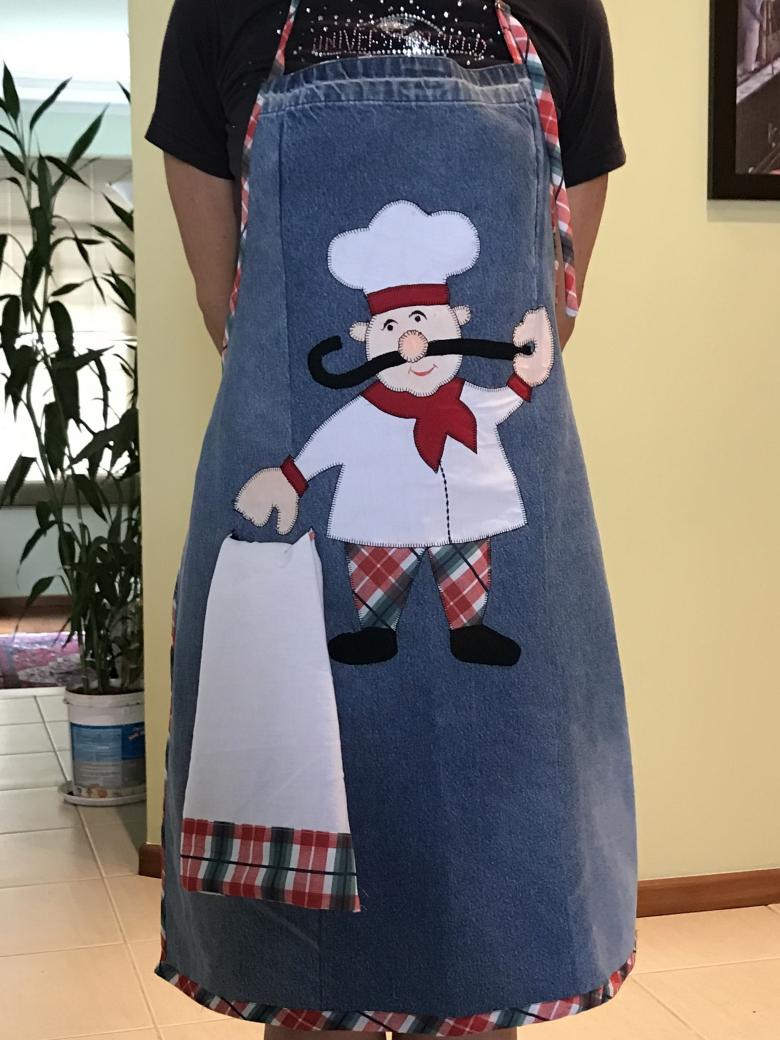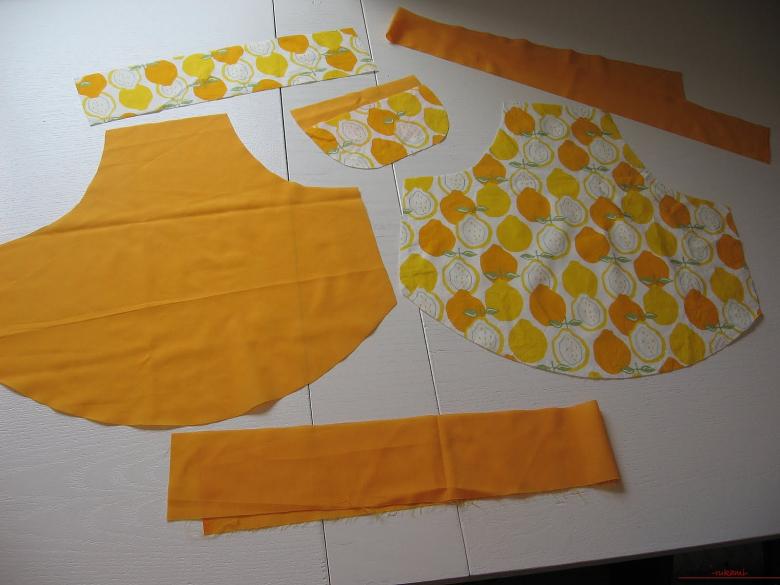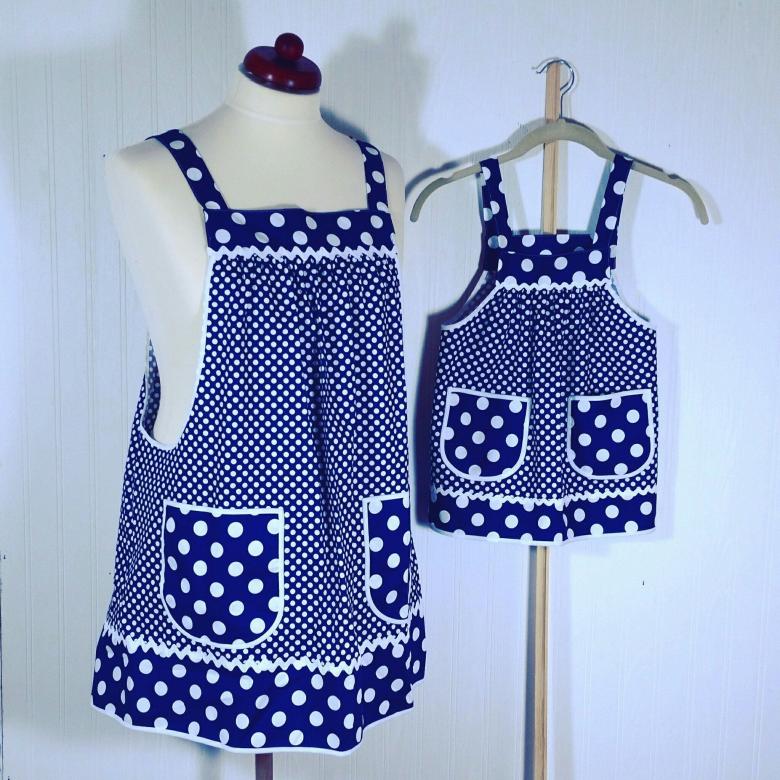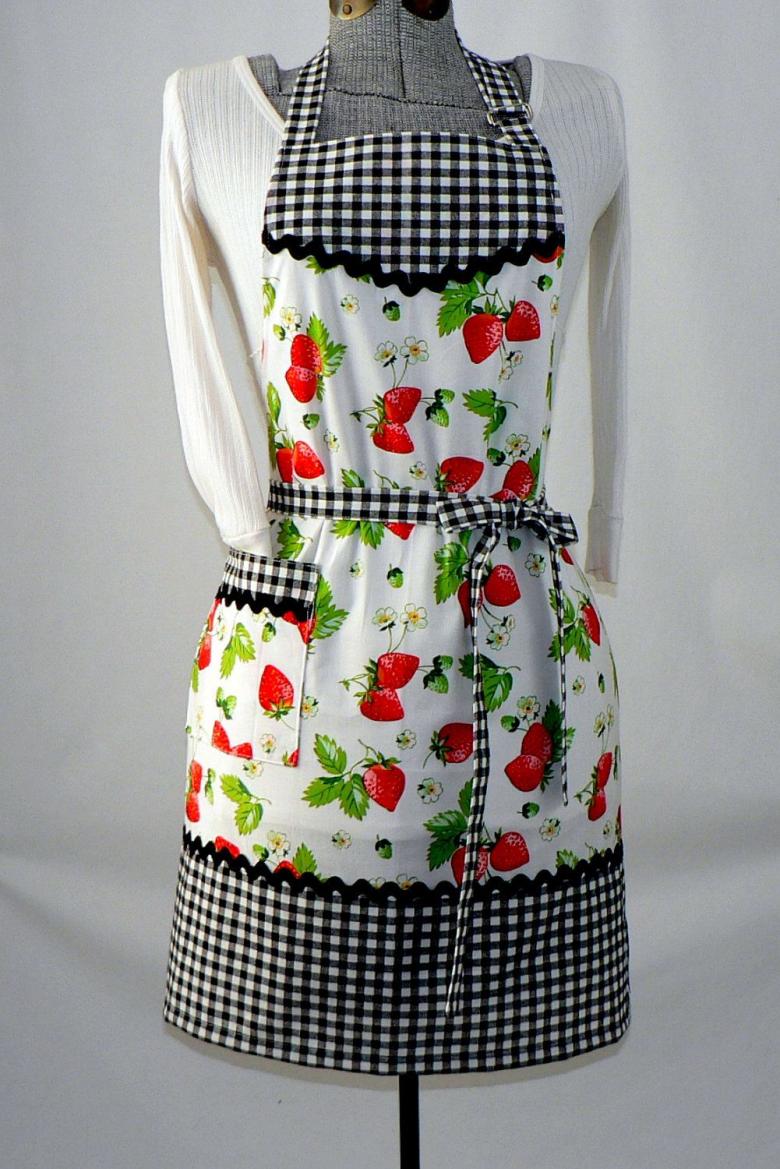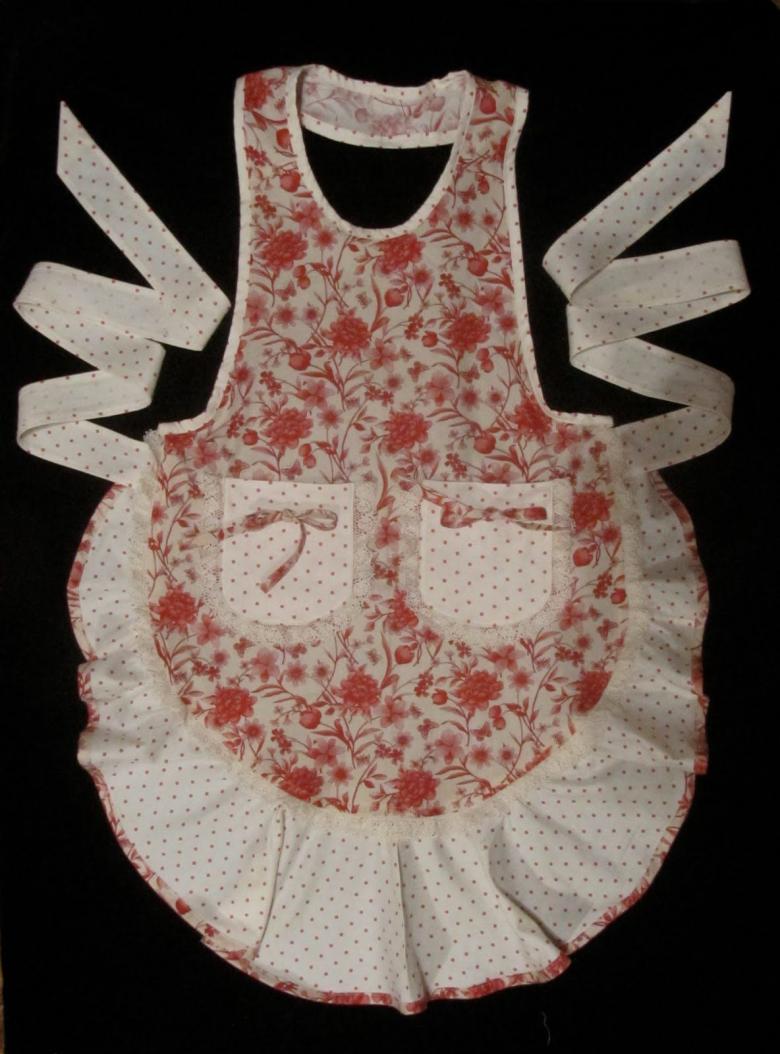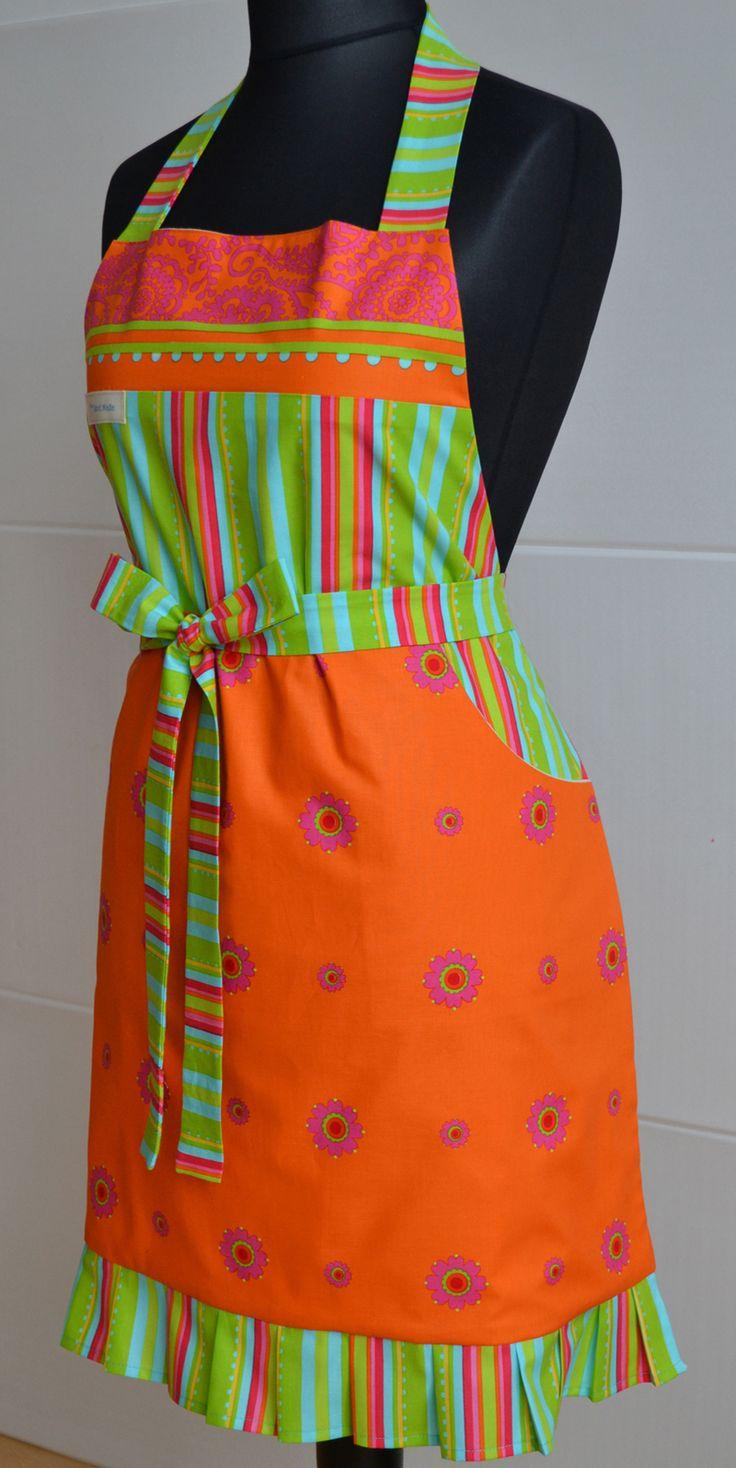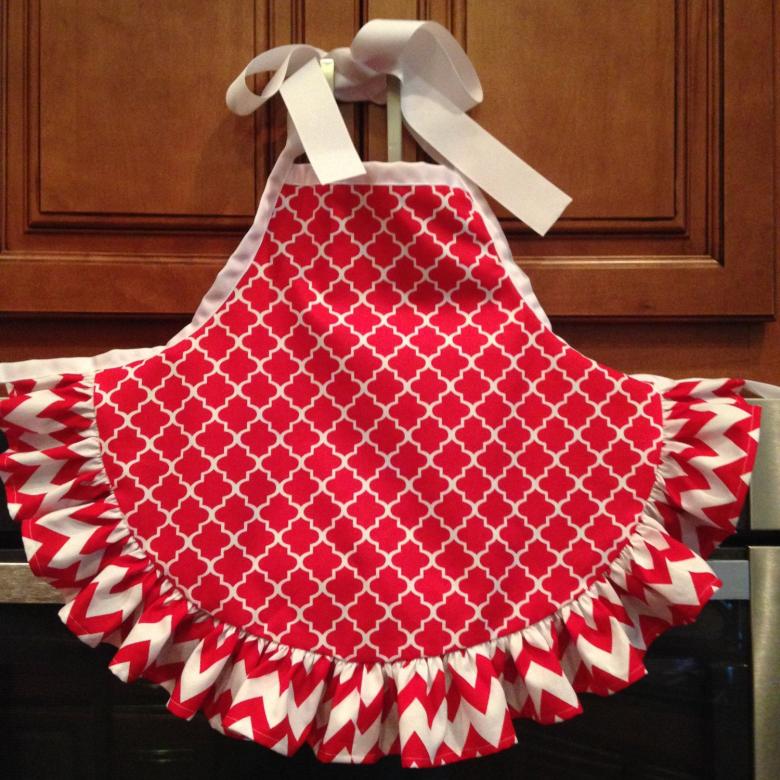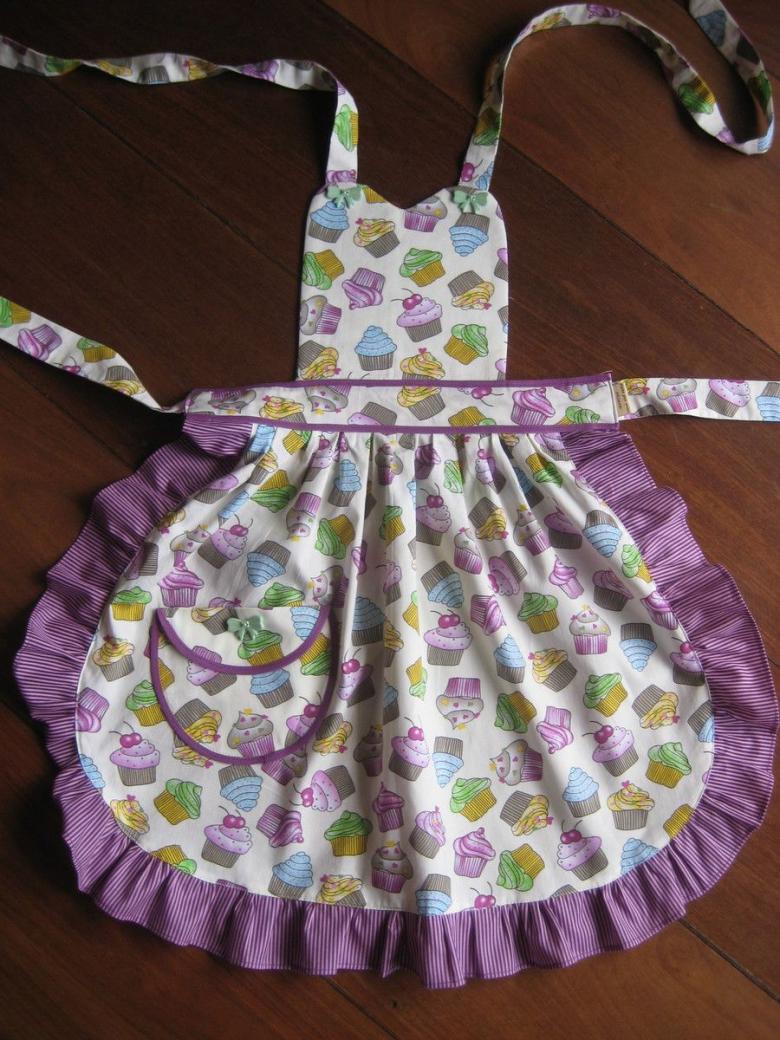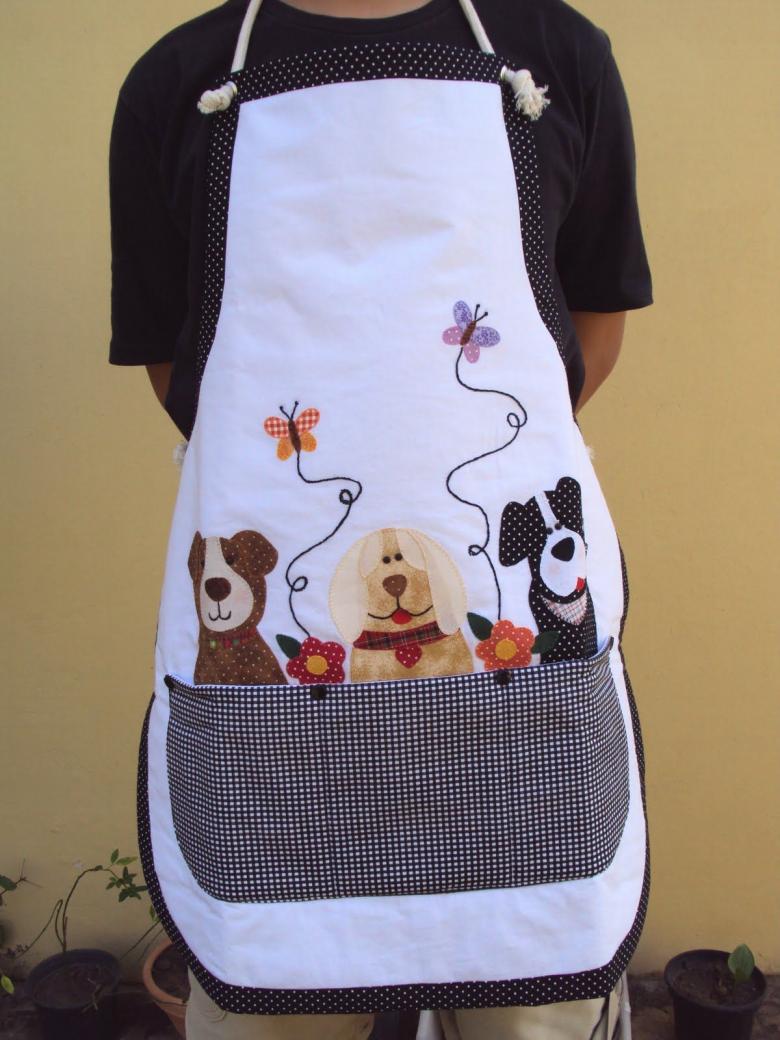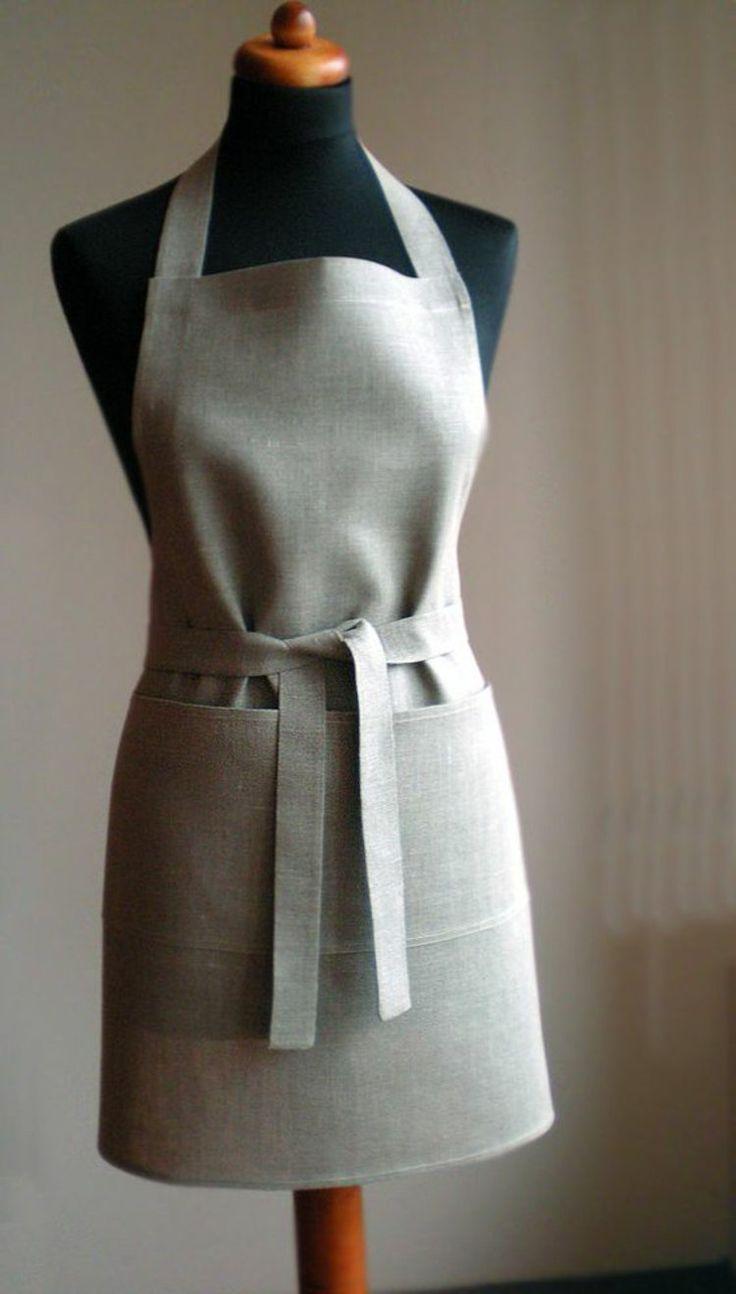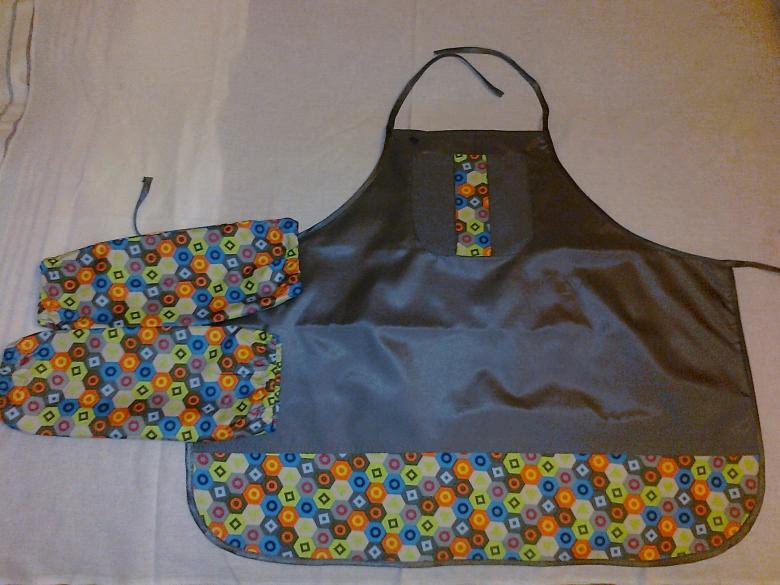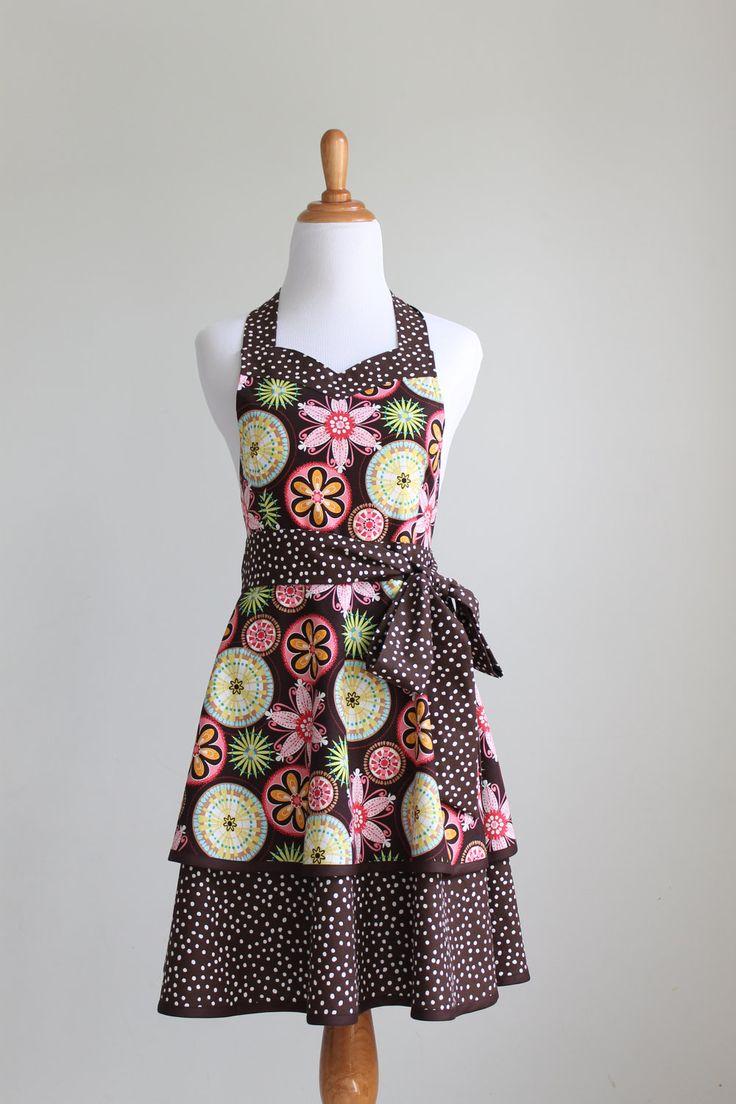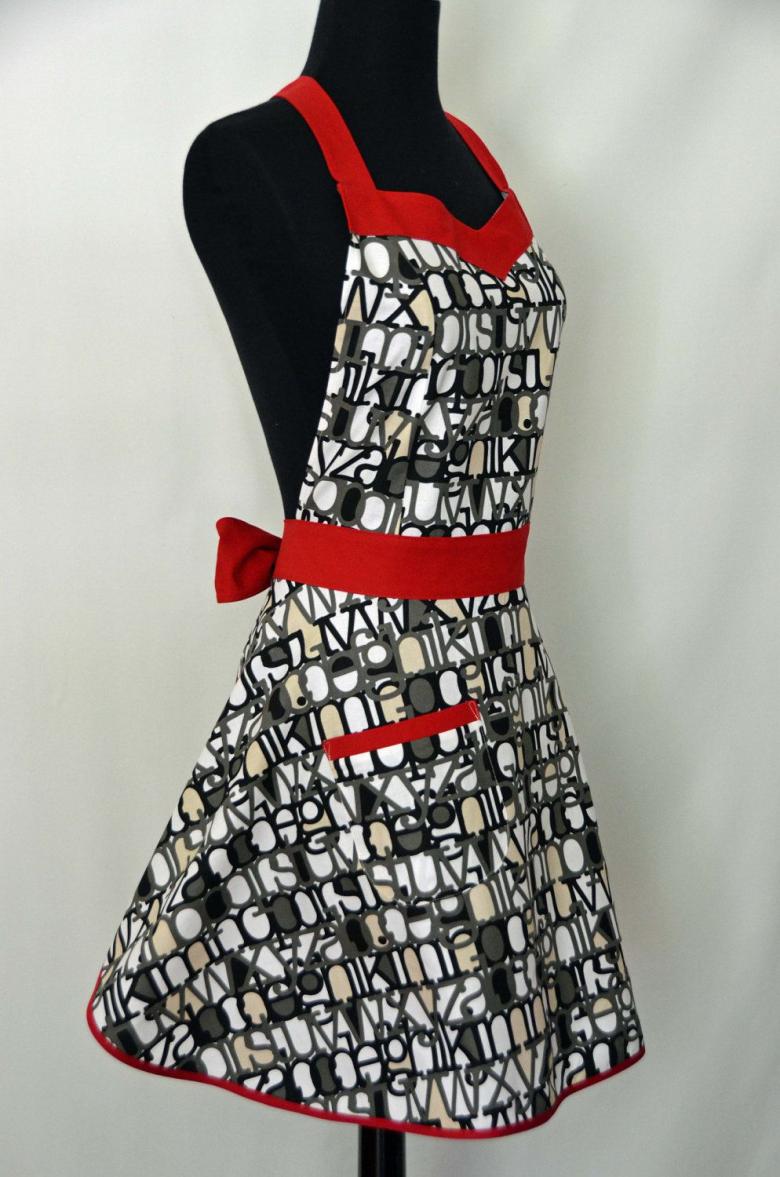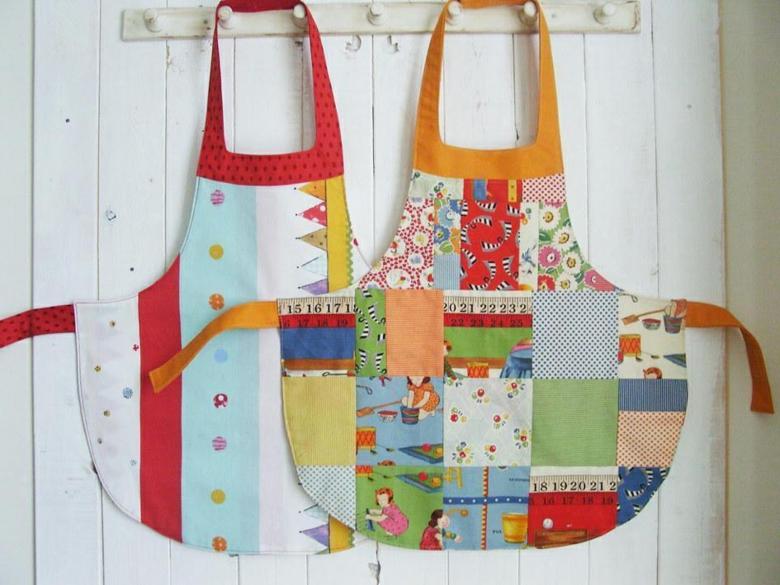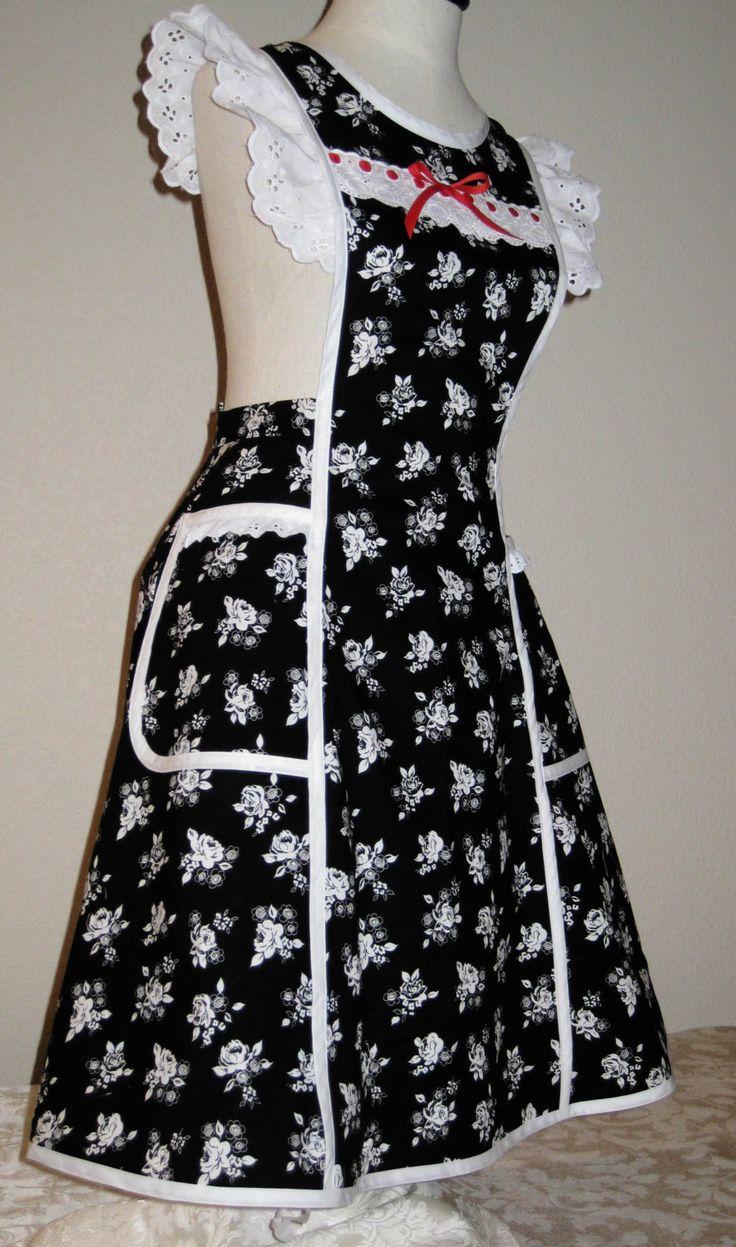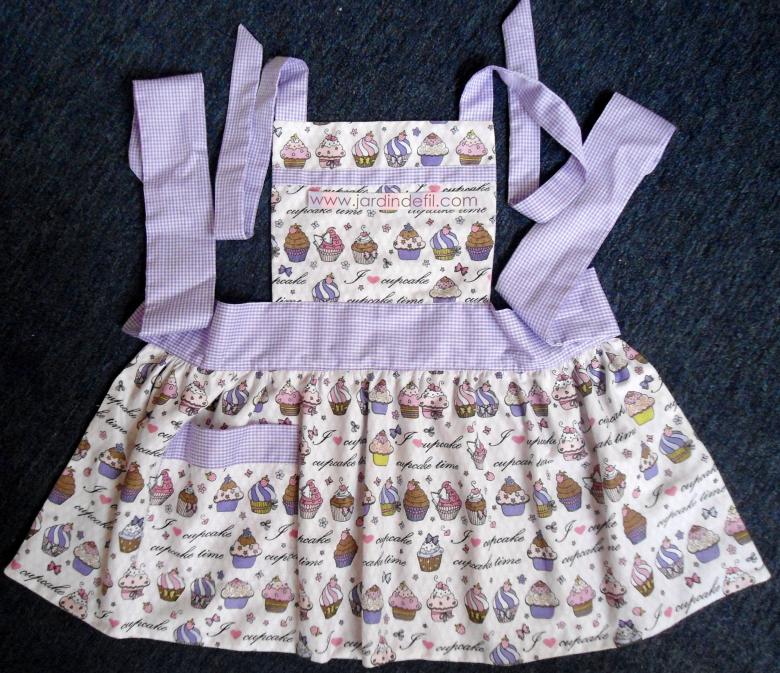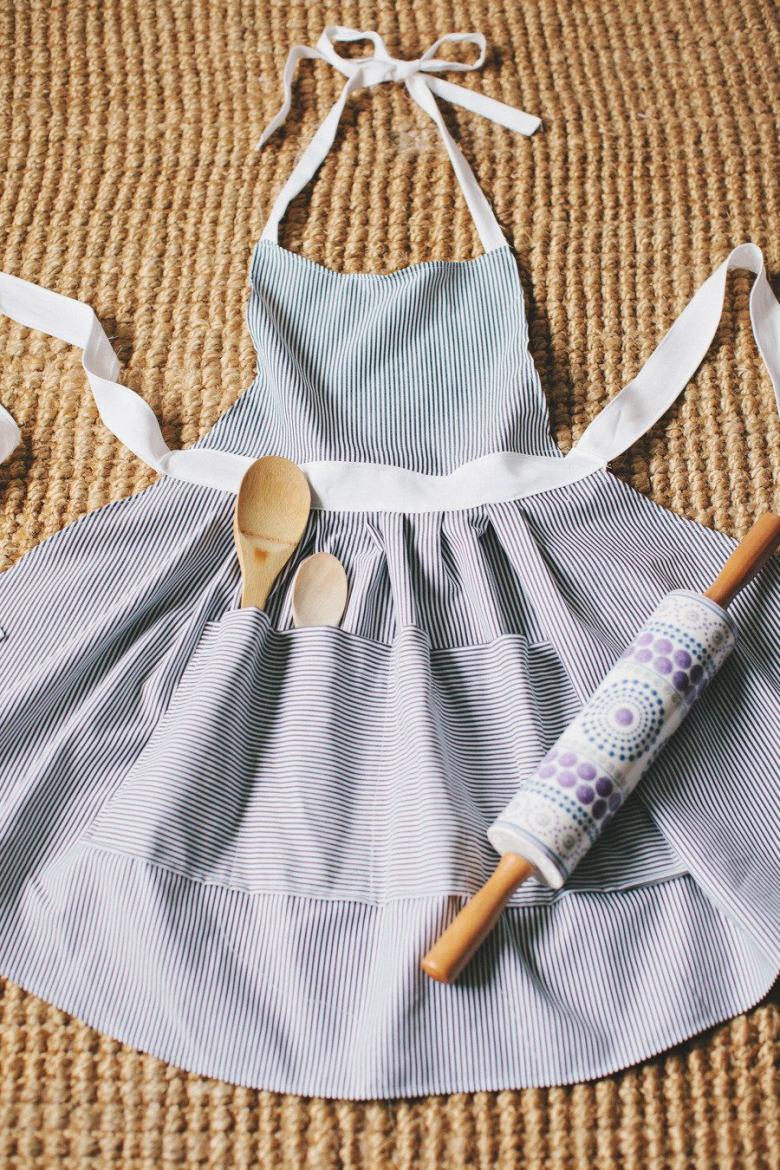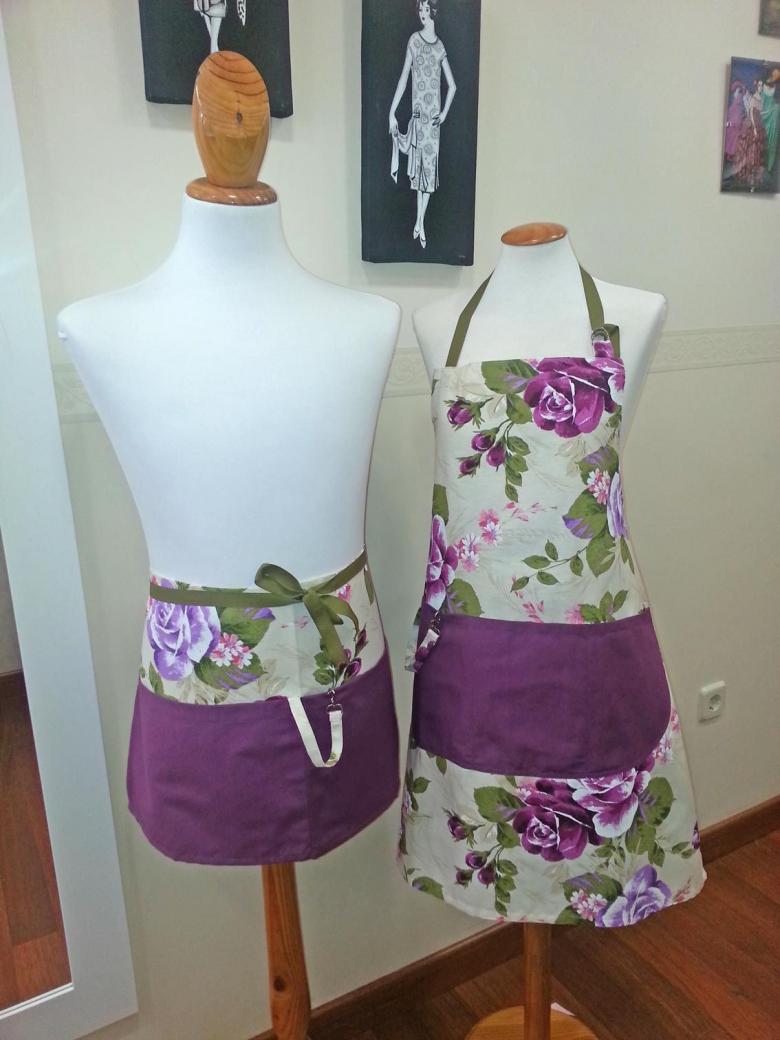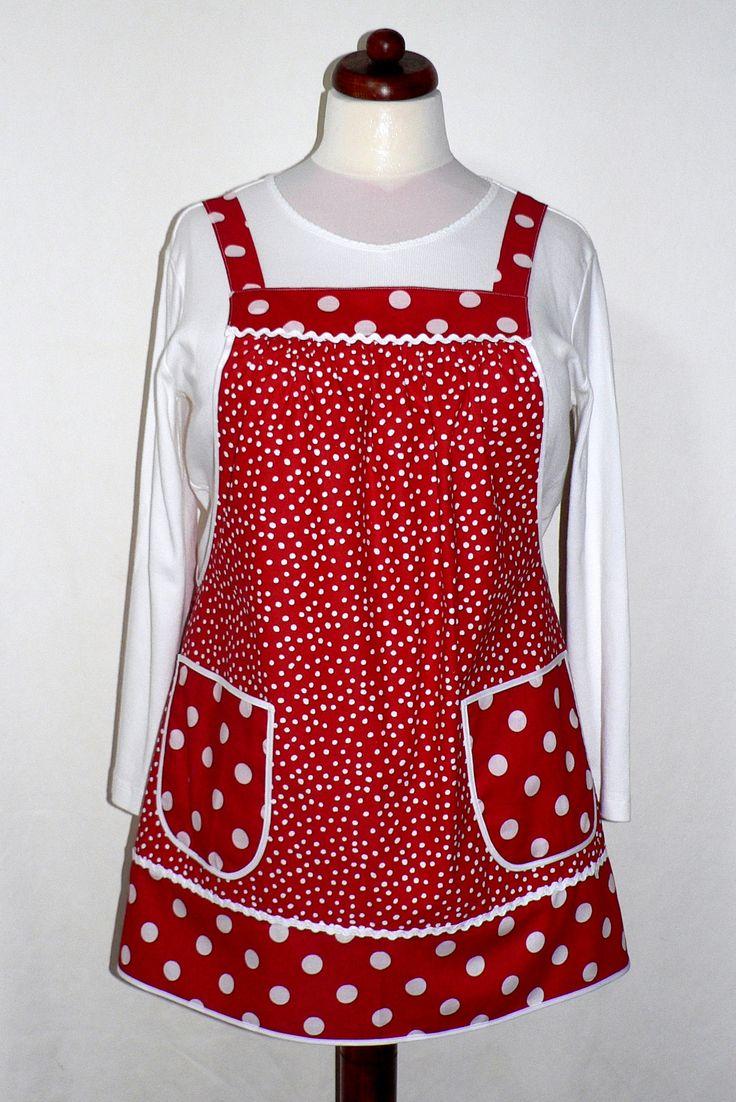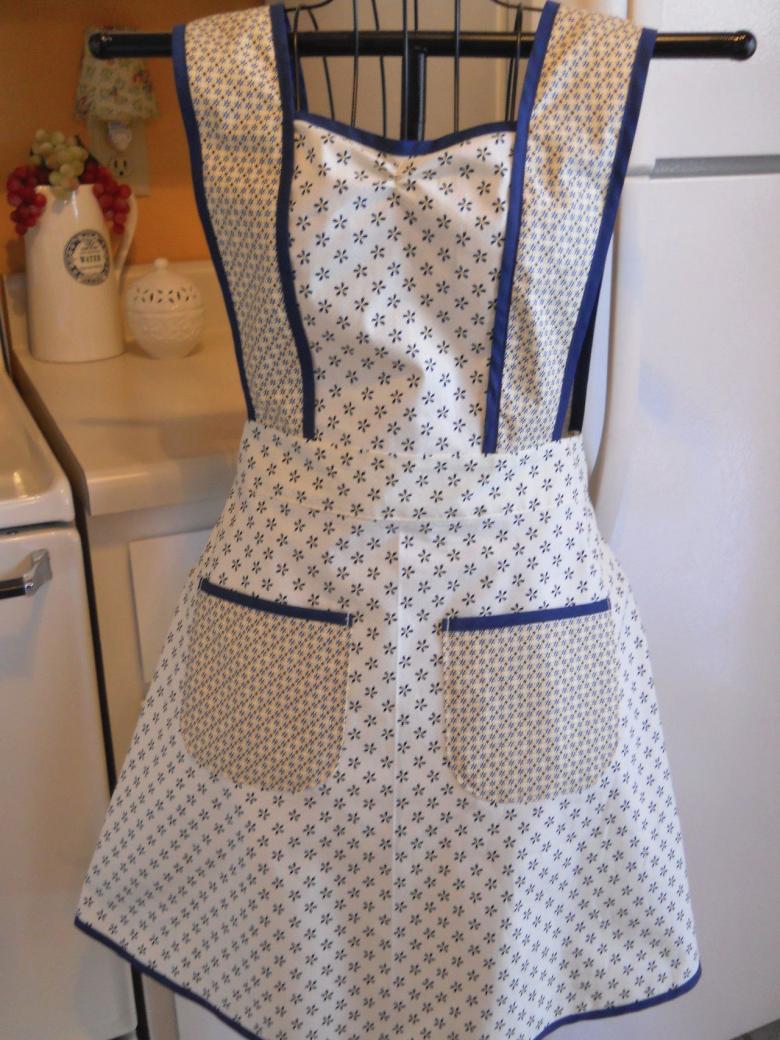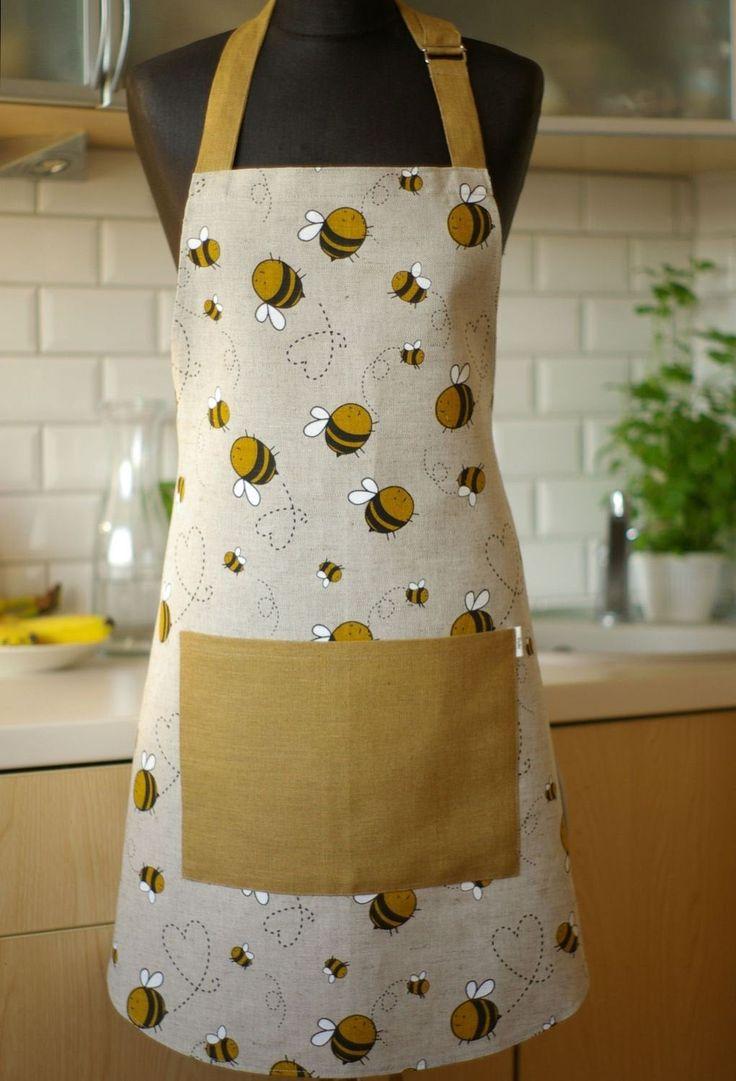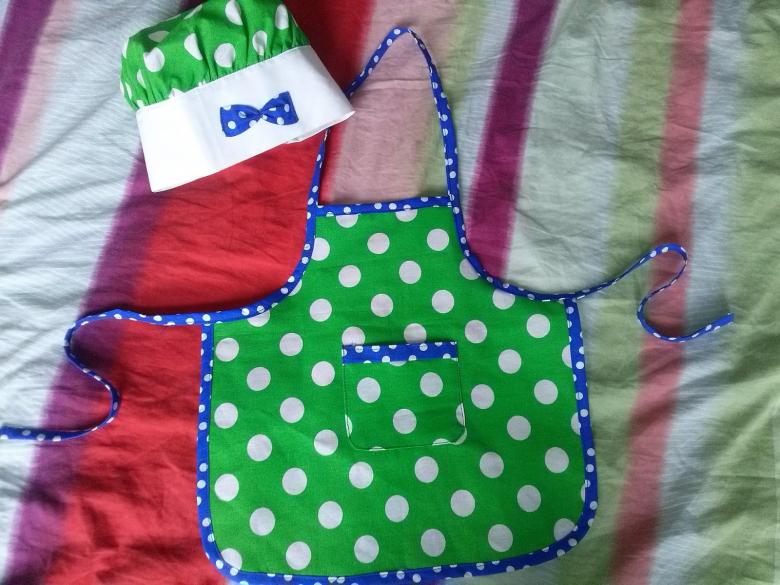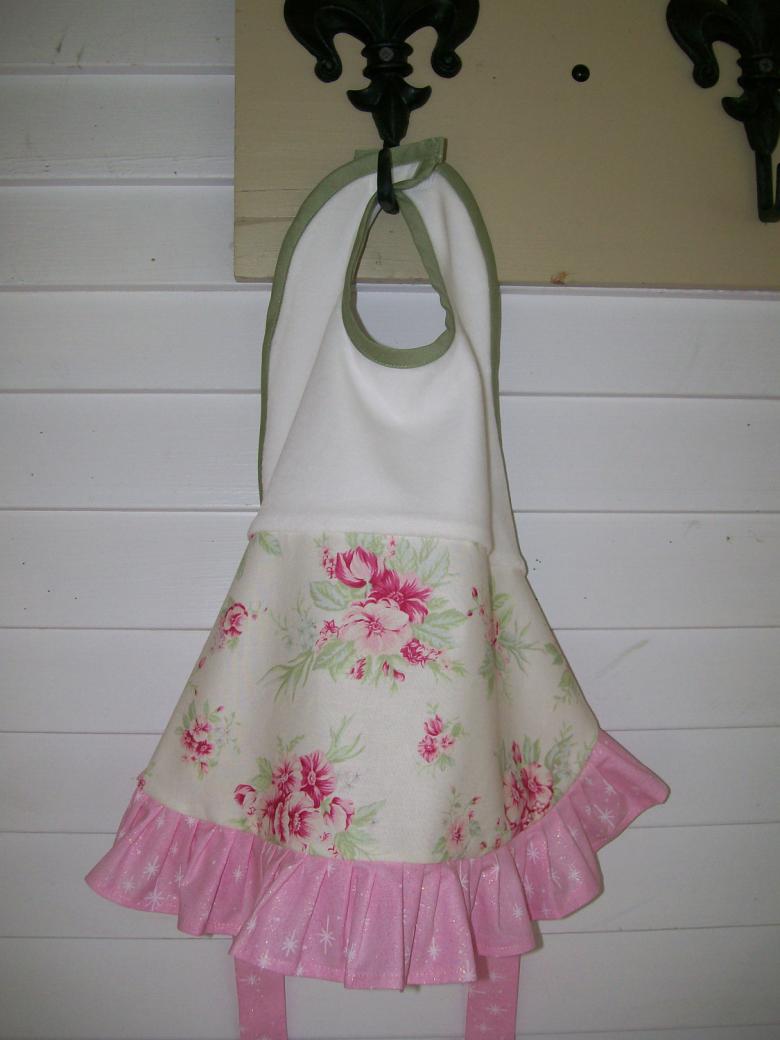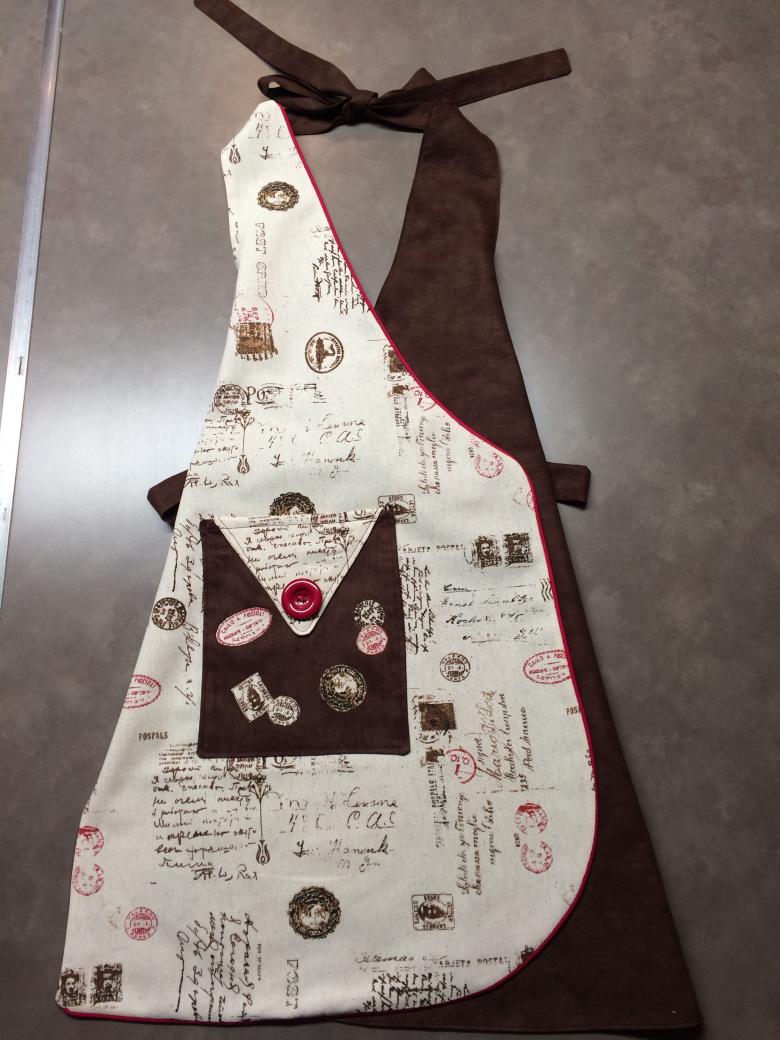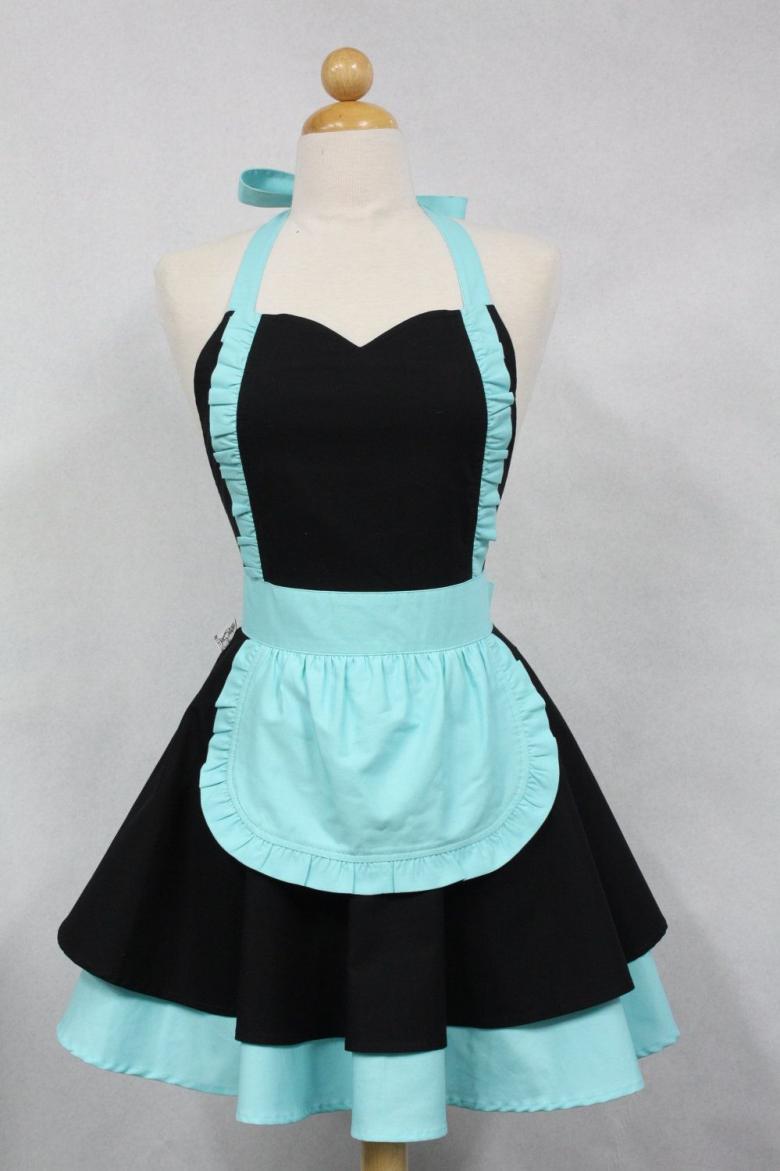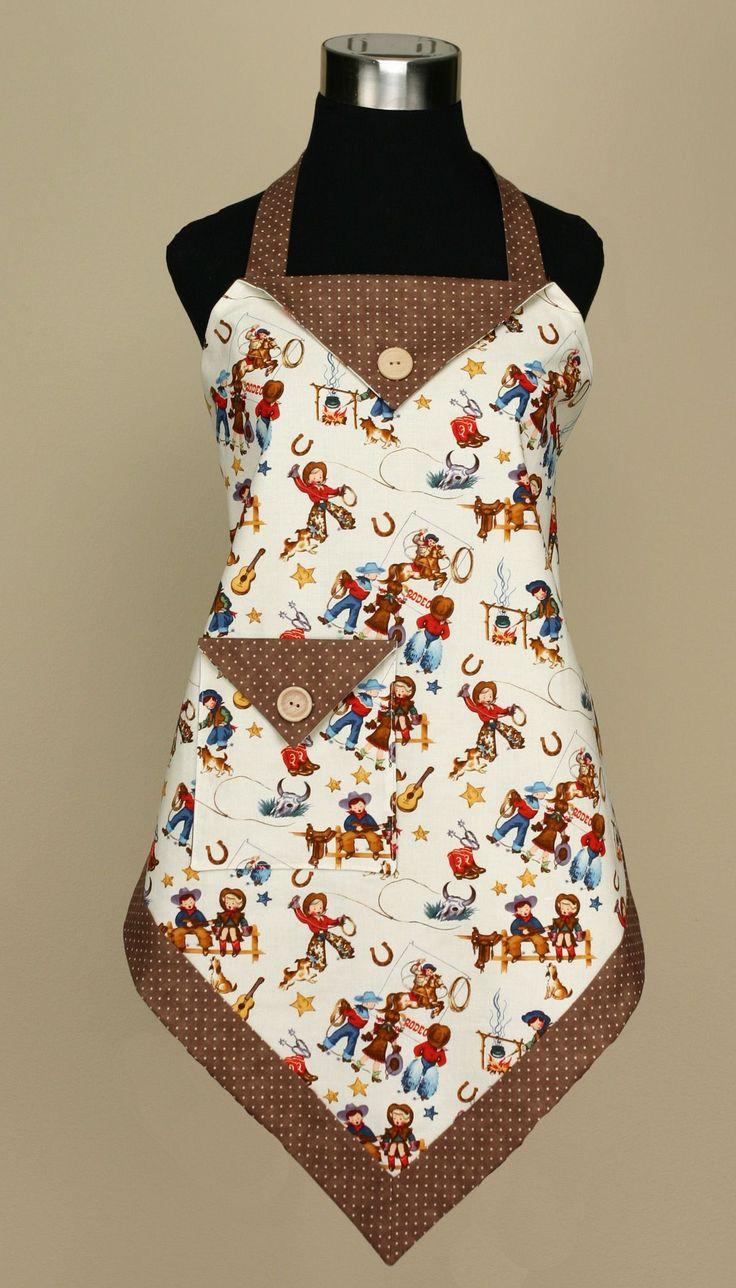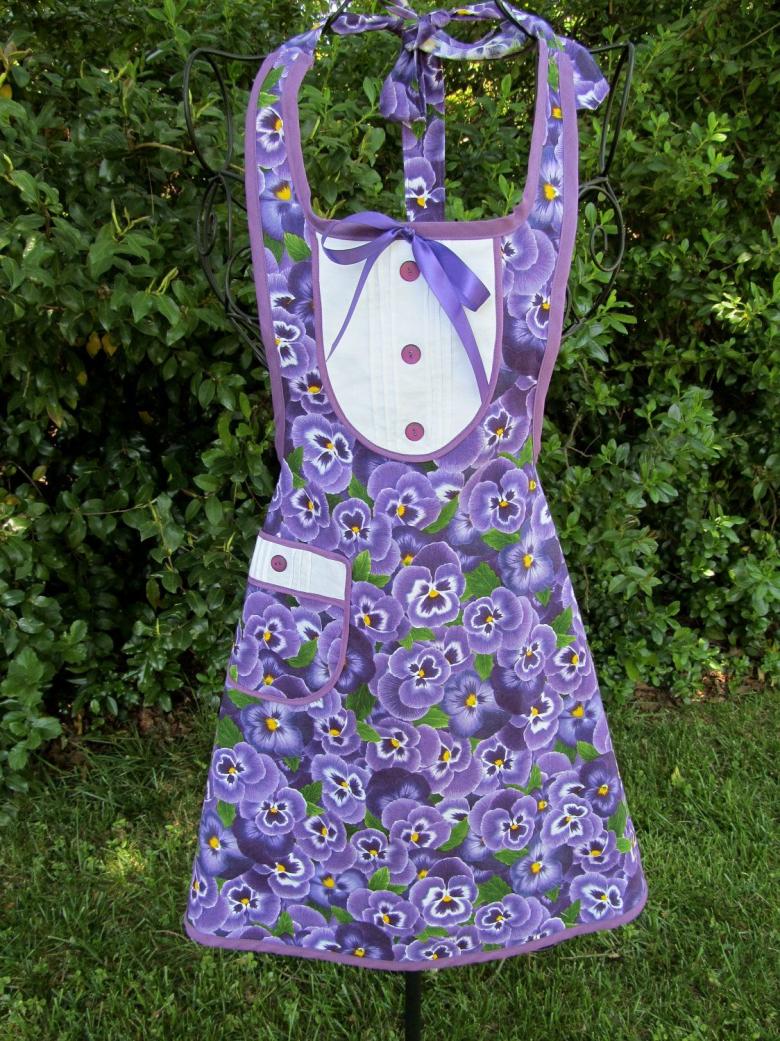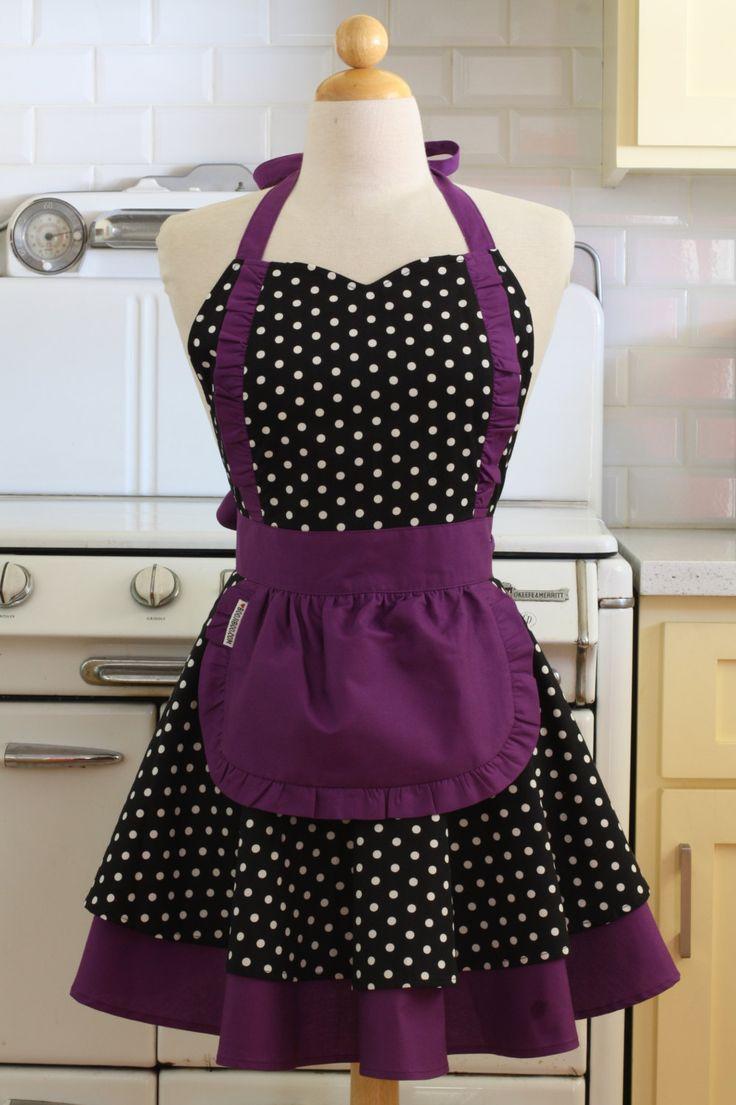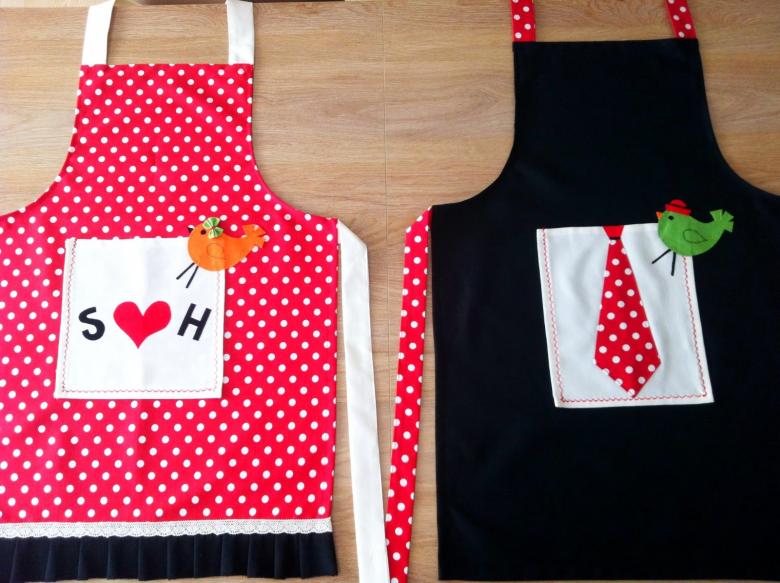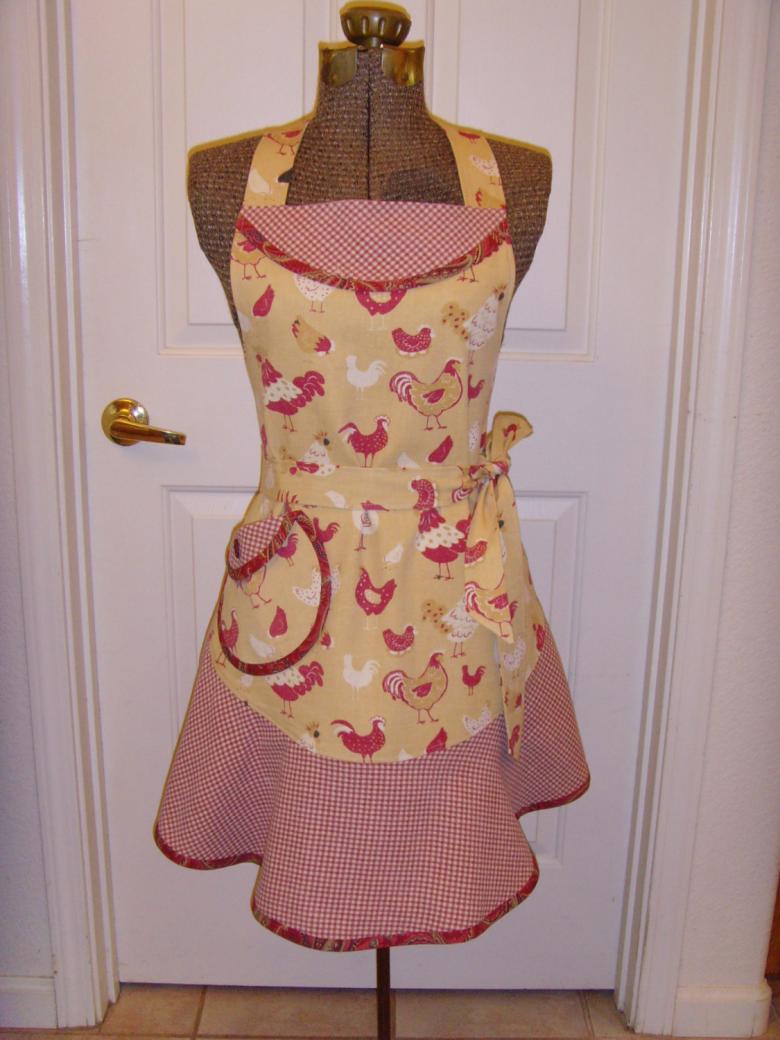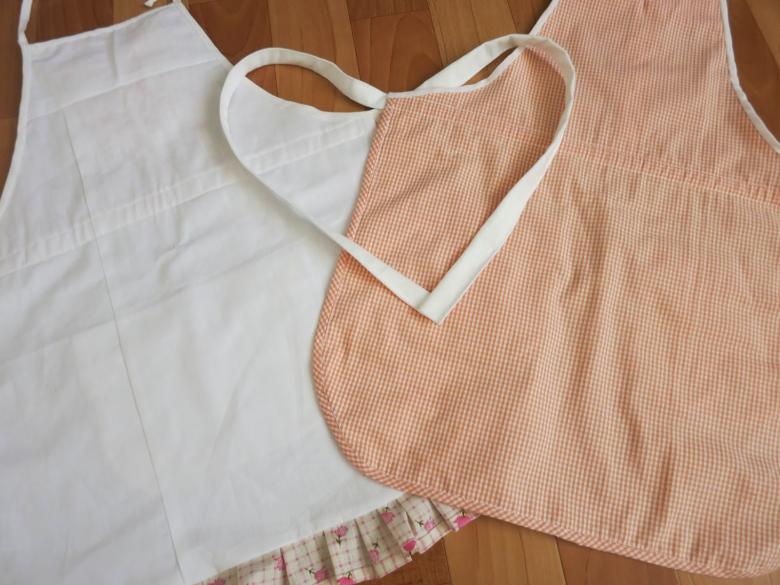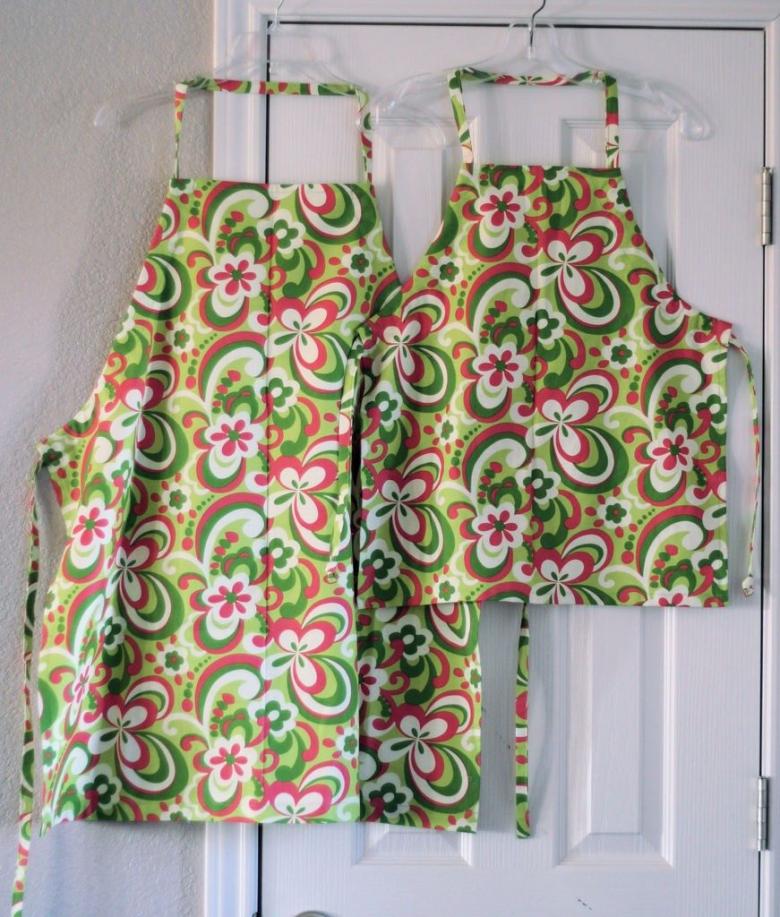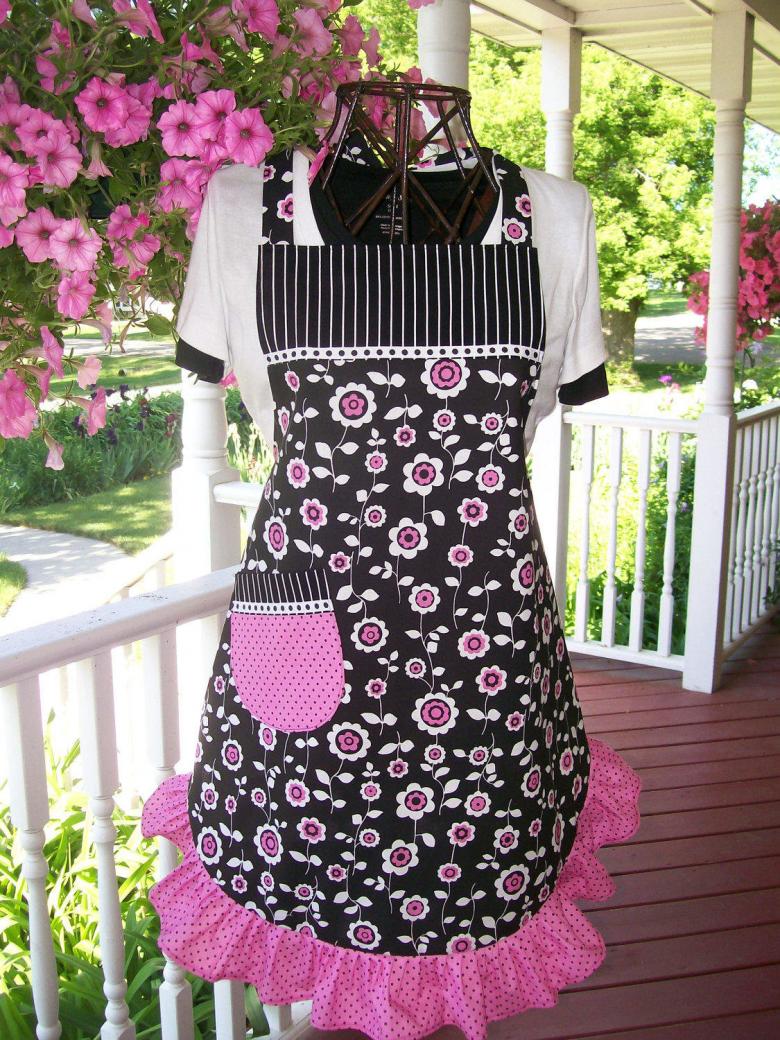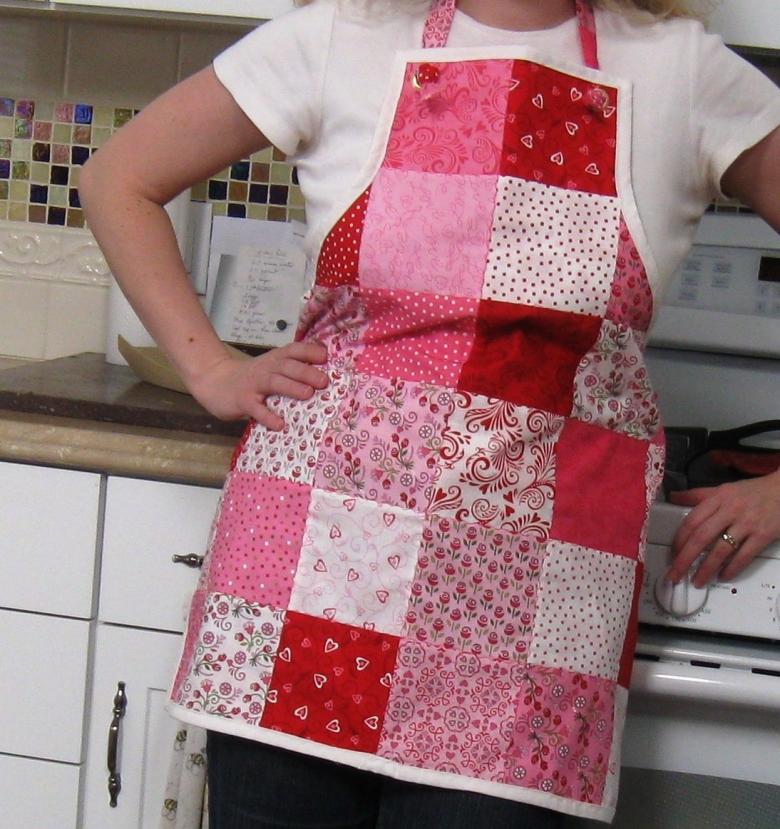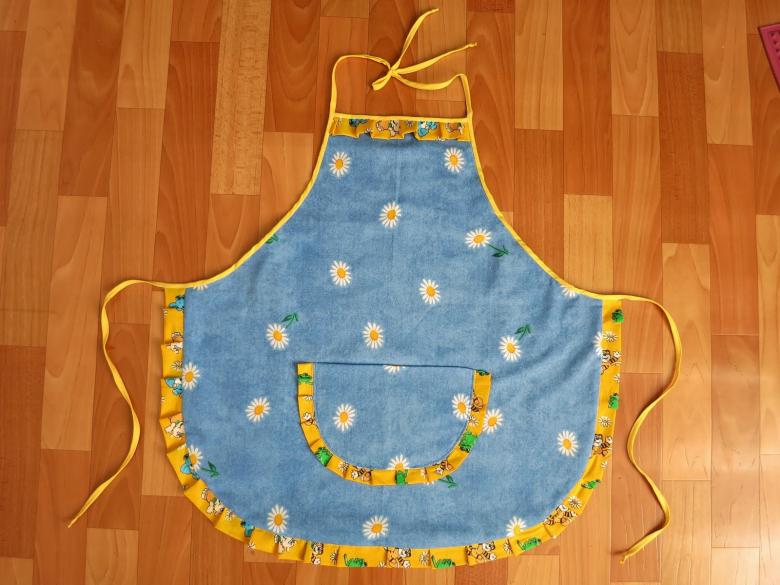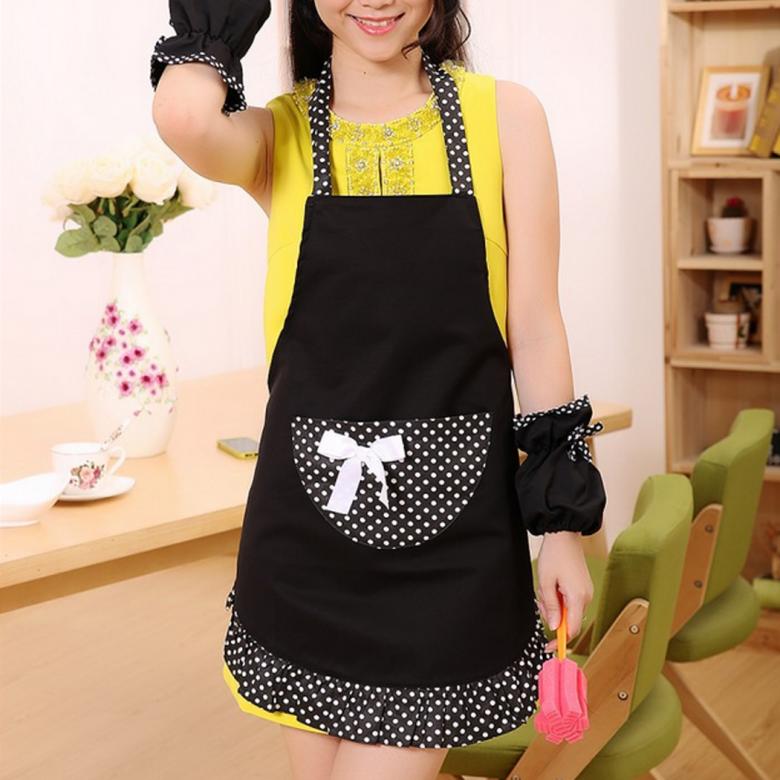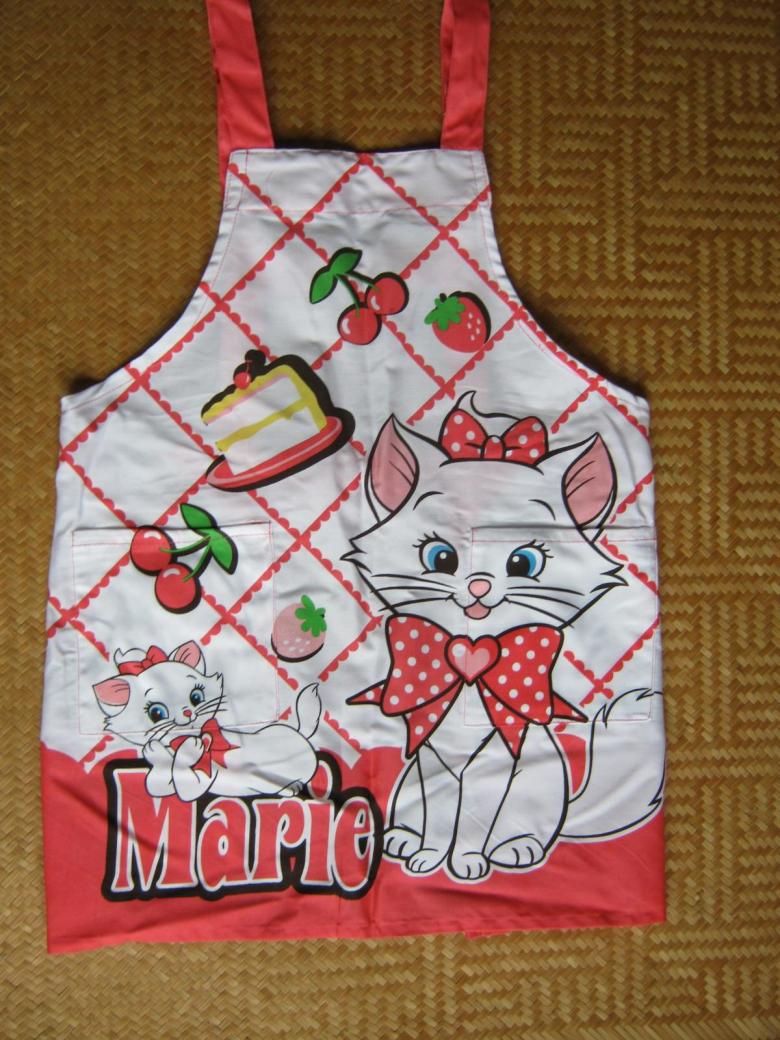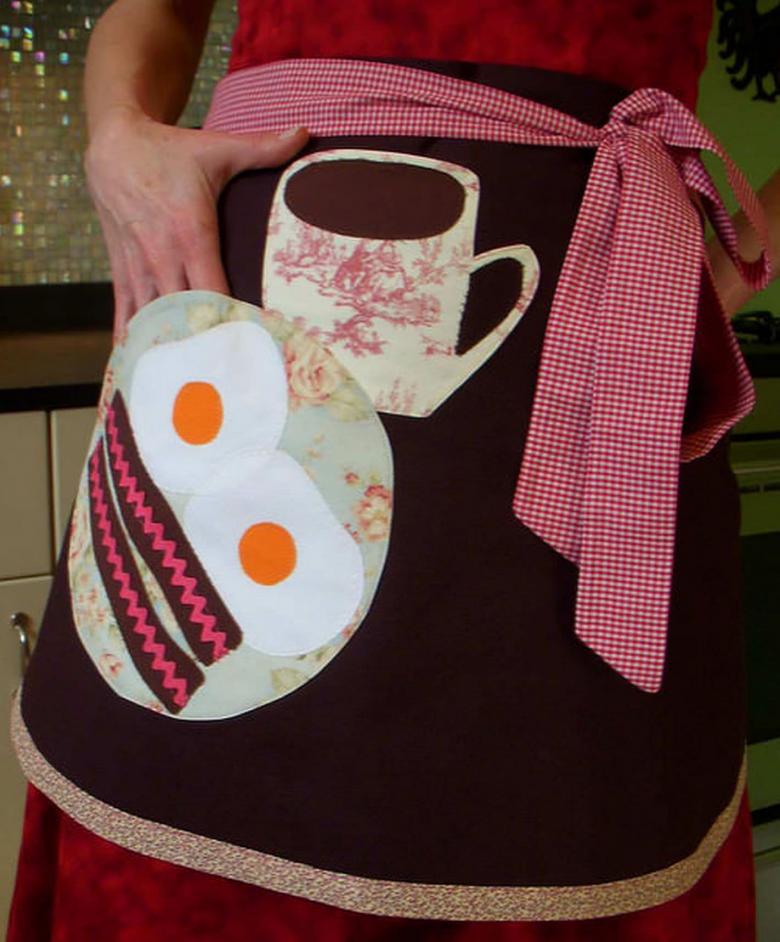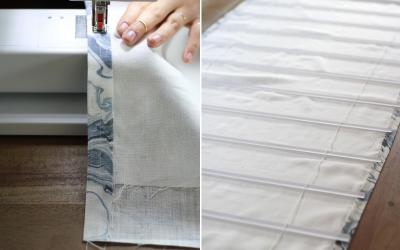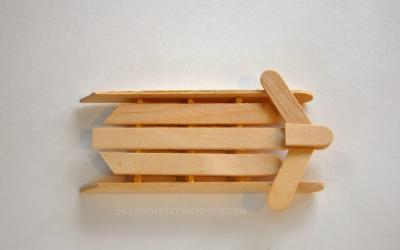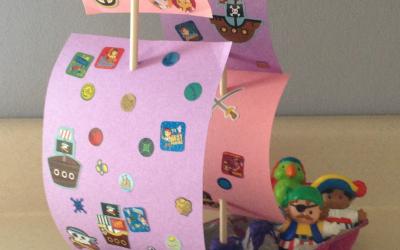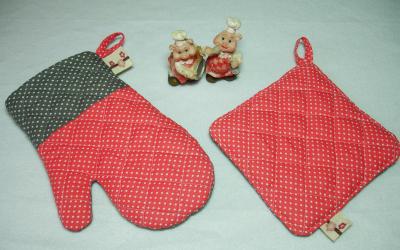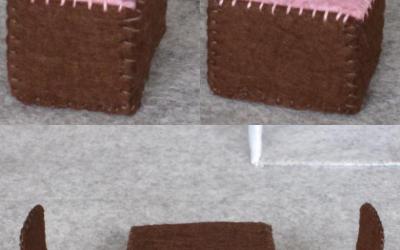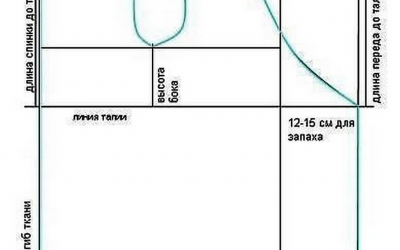How to sew a cool apron for the kitchen with his own hands - patterns, styles, materials, sewing steps
Sewing clothes are trusted to designers, but nice and useful little things for the home can be made on their own, developing their own skills. If the house has a sewing machine, the hostess has free time and the fabric you like, the ideal option would be to sew an apron for the kitchen, work or activities in the garden.

The procedure how to sew an apron is not difficult and once you try it, it will be difficult to stop. Beautiful apron is easy to use at home and in the garden, and also to make it as an original and useful gift for family and friends, decorating it with embroidery or applique.
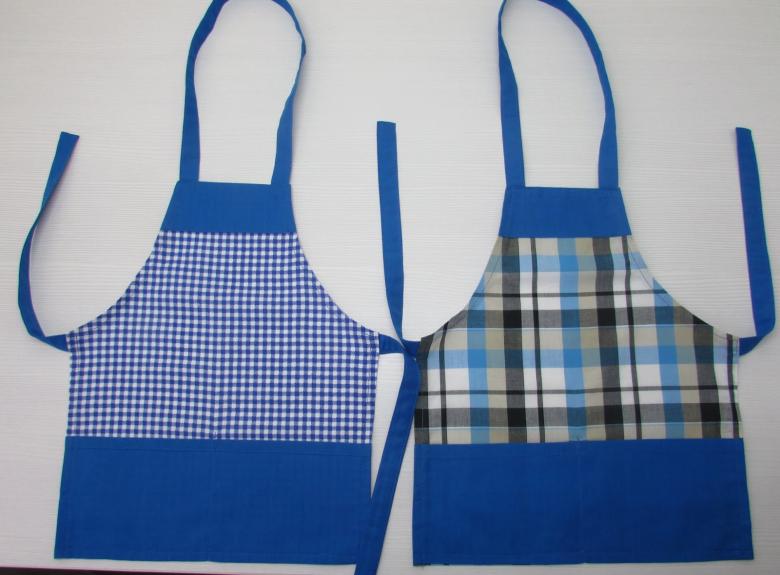
The need for a work apron
Aprons on the belt and full aprons are recommended for use to protect clothing and the body, depending on their type. Some models help prevent grease and moisture during cooking, you can wipe your hands on them and not worry that even home clothes become unsightly in appearance.
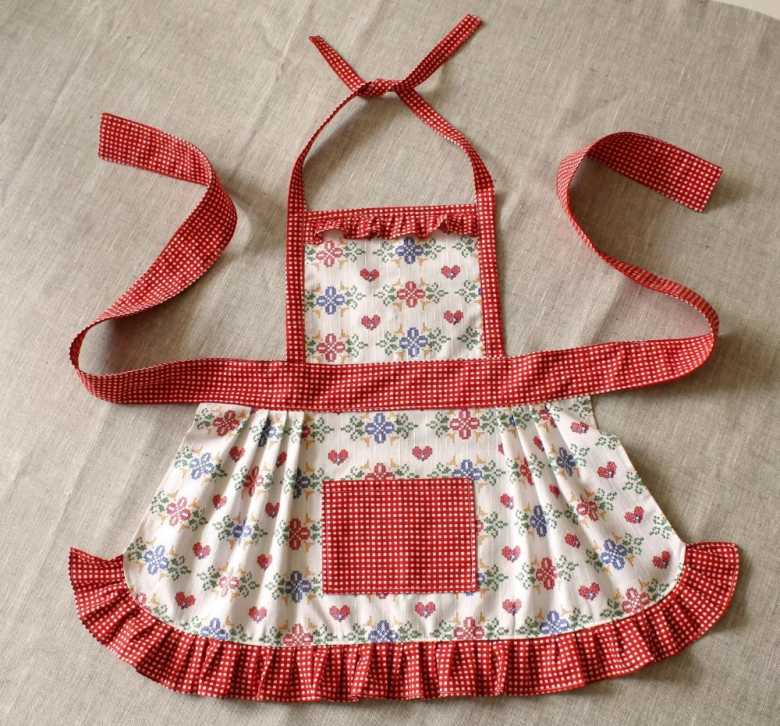
Working apron, most often used to protect clothing from dirt and dust, damage in the process of performing certain manipulations. Such products are perfectly suitable for those who like to make crafts, do creative work, using varnishes and paints, other liquid mixtures that stain clothes

Apron shapes and a general description of the models
The simplest is considered a pattern apron for the kitchen with ties on the waist and without a bib, it is easy to sew in just a few hours. Depending on the intended use and purpose of the apron, choose his style and model, selected fabric and additional elements.
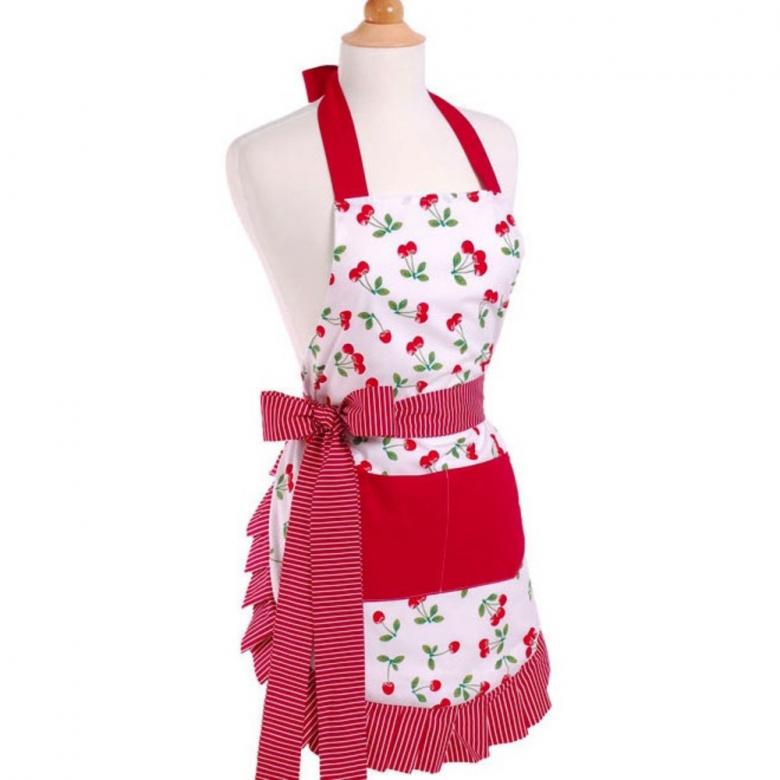
On the basis of basic styles it is easy to develop your own idea, adding an interesting decoration or ornaments, turning an impersonal apron into a work of art. Decorative elements are sewn mainly to decorate the finished product and do not affect its functionality, unlike pockets and straps.

Simple apron
Apron of this type is most often rectangular or semicircular, the model on the belt is excellent for performing not complicated work at home. Simple patterns of this type are used to sew children's and adults' aprons, which can be decorated with pockets, ruffles and appliques.

Apron with bib
More complex model with a bib used in the kitchen and in the workshop, fully protects clothing from contamination Tovachnoy bib can be simply sewn to the apron at the waist or pick up a solid pattern with an adjustable top strap, without uncomfortable ties in the neck.
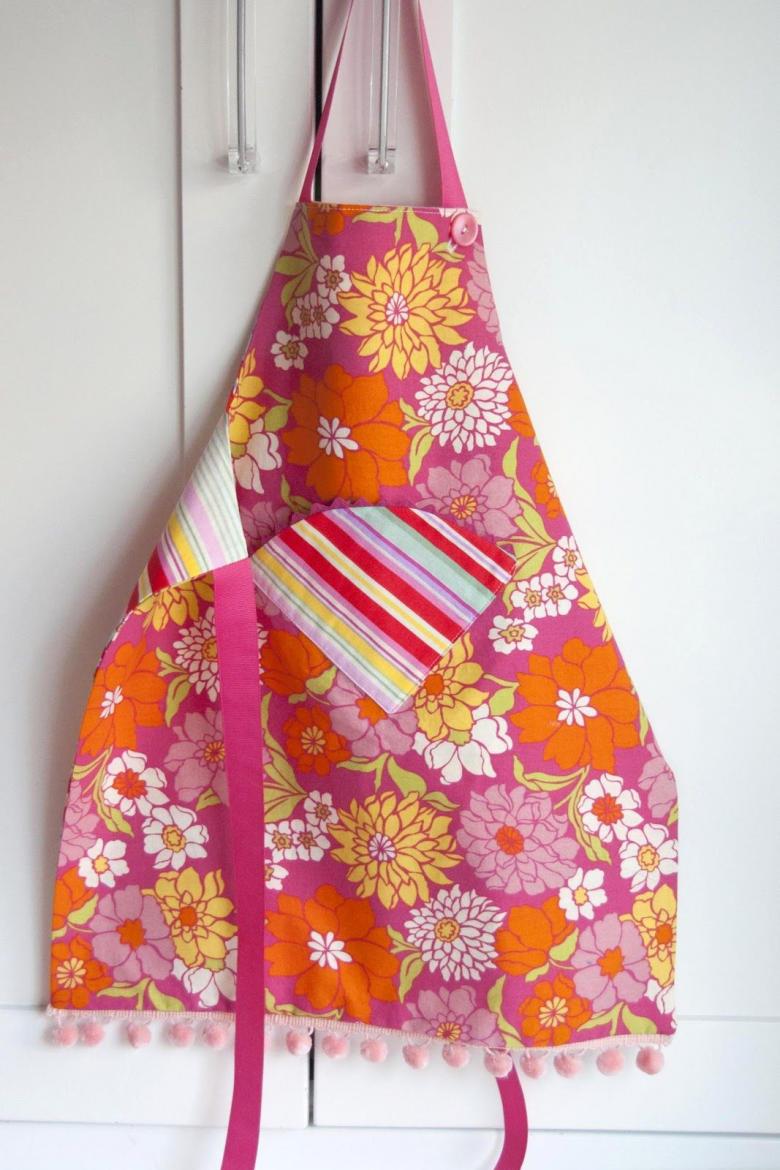
Model with pockets
An interesting and original style of a shortened apron with several pockets is great for those who are fond of creativity. A similar model can be adapted for fans of grilling, because in all sorts of pockets you can store and always have on hand accessories for creativity and cooking.
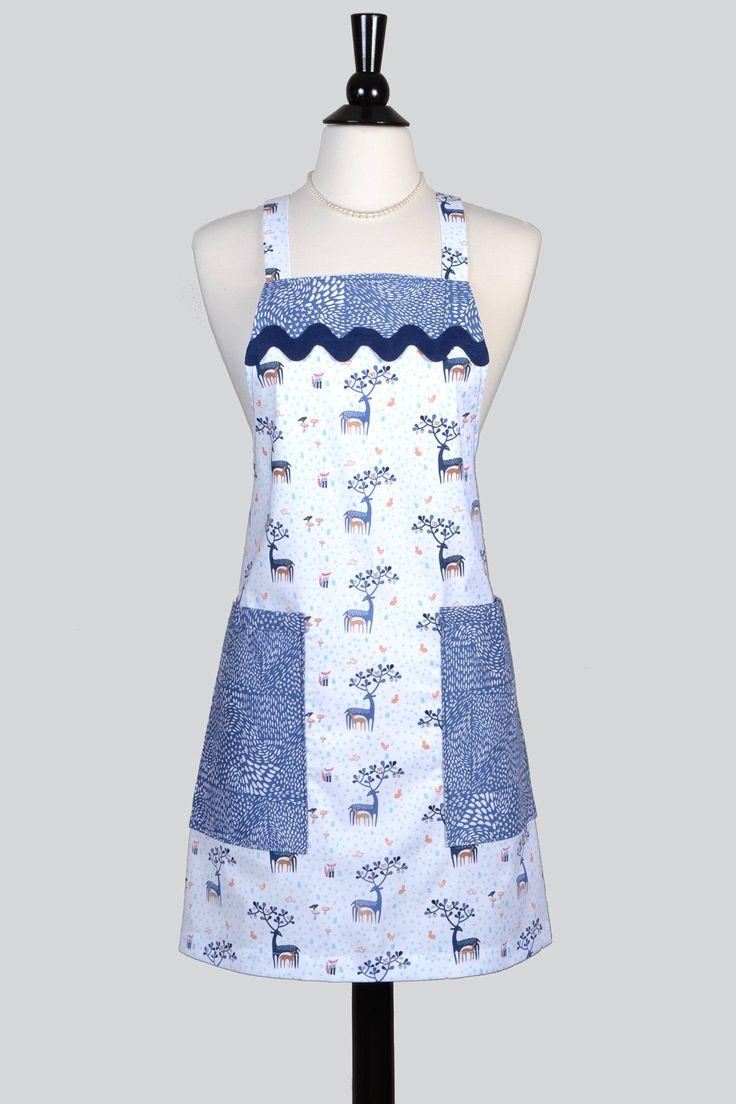
The right choice of materials for sewing an apron
Sew an apron of any style can be made from new fabric or already used things, but the appearance of the product has a certain value. The technique of how to sew an apron is not difficult and for this process it is easy to choose a good and inexpensive material, opting for this textile:
- Teflon, the most expensive option, but aprons made of such fabric for a long time retain their attractiveness and remain neat;
- linen, such textile perfectly absorbs moisture and dries quickly, linen aprons can be used for a long time in the kitchen and in the house;
- cotton, a light and comfortable material absorbs moisture normally, it can be washed many times at high temperature without fearing for the loss of attractiveness
- Denim, a dense and heavy textile, is most often used for sewing aprons and aprons for garden work, but not for the kitchen.

Selecting ideas for sewing an apron with their own hands, you can think about a combination of fabrics and materials in one product. This will help to diversify the design and make the apron really original and suitable in color to the kitchen, but for the office it does not matter how, look apron.

A hostess on a note: Choosing the right fabric can be in the same style to sew an apron for the kitchen, trays for hot items and curtains for the windows. In this case, the kitchen will look the most stylish and original, especially if you complement the set with napkins for dishes and a tablecloth for the table.
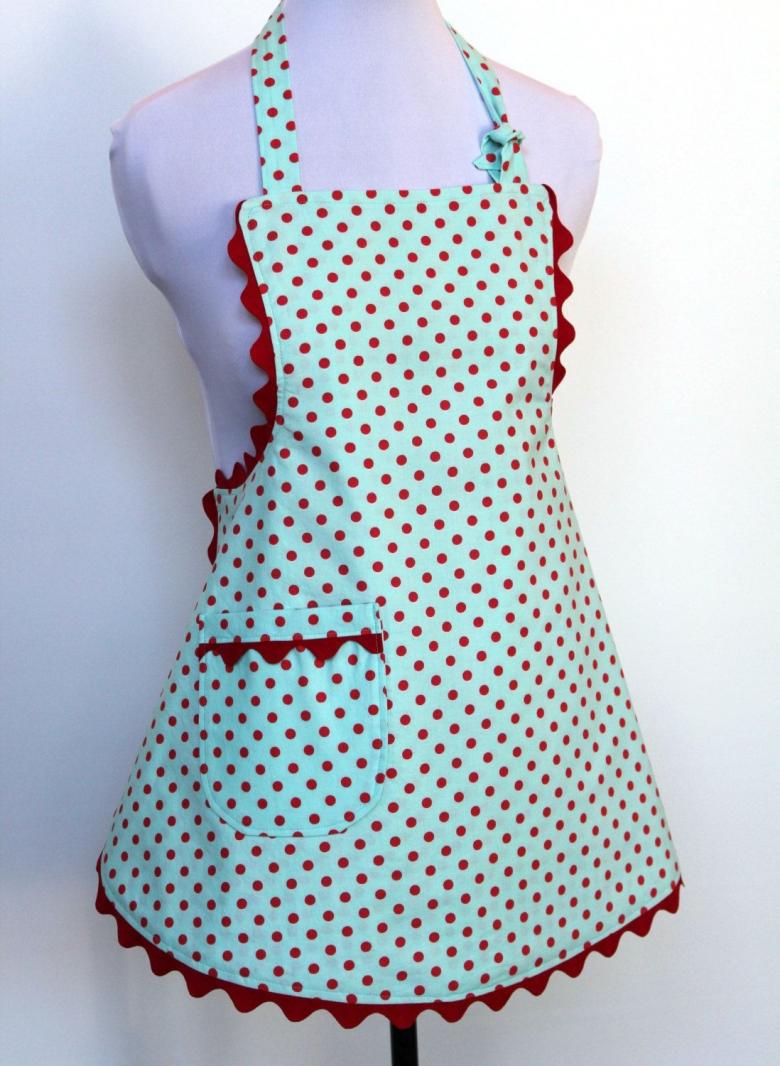
General rules for sewing an apron with your own hands
In the course of sewing an apron, it is important to adhere to a number of rules that will help to make a practical and beautiful product. These recommendations apply to all stages and help to simplify the process, and thus save time on correcting mistakes and defects:
- It is better to make a pattern according to the real size, but do not forget that all details are transferred to the fabric with an allowance of not less than 1,5-2 cm for the processing of seams;
- Kitchen apron on the belt does not require the choice of pattern, but the size of the belt is better to do immediately, and the wider it will be, the more convenient it will be for the hostess;
- Pockets are not always included in the sketch, and they can independently complement the pattern, choosing any form of these elements.

It is better not to choose flammable and too thin fabrics, they will quickly become worthless, and the product itself will lose its marketable appearance. Choosing a pattern is primarily guided by the intended use of the product and provide for pockets, ties and other elements.

Stages of sewing a simple apron on the belt
To try your hand at sewing useful accessories for the home, it is better to choose simple and uncomplicated models, such as an apron on the belt:
- On the fabric draws a sketch with two parts, focusing on your own measurements;
- The rectangle is the future belt, and the square is needed to sew the apron;
- From the remaining fabric you can cut another rectangle, this will be a pocket;
- sew the edges of the rectangle to get a long enough belt;
- The formed waistband is sewn to the front square and the pocket is sewn onto it;
- The edges of all the elements are stitched and processed, you can use decorations.
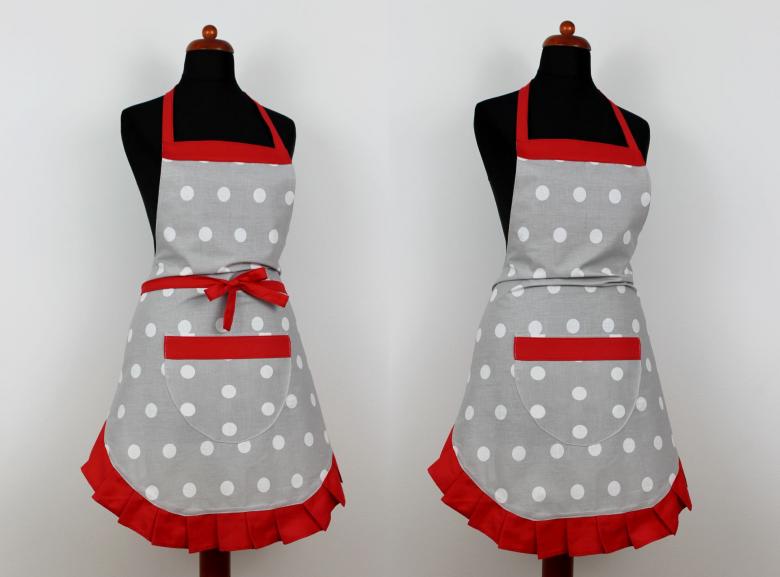
After cutting all the elements are neatly sewn together, and apron after washing will be ready to use for its intended purpose.

Sew a kitchen apron with their own hands is not difficult, and such products are better to make several, for sewing you can use different ideas. Combining fabrics and decorations, decoration and sewing techniques can easily create a complete and useful product, it is suitable for use at home and at home.
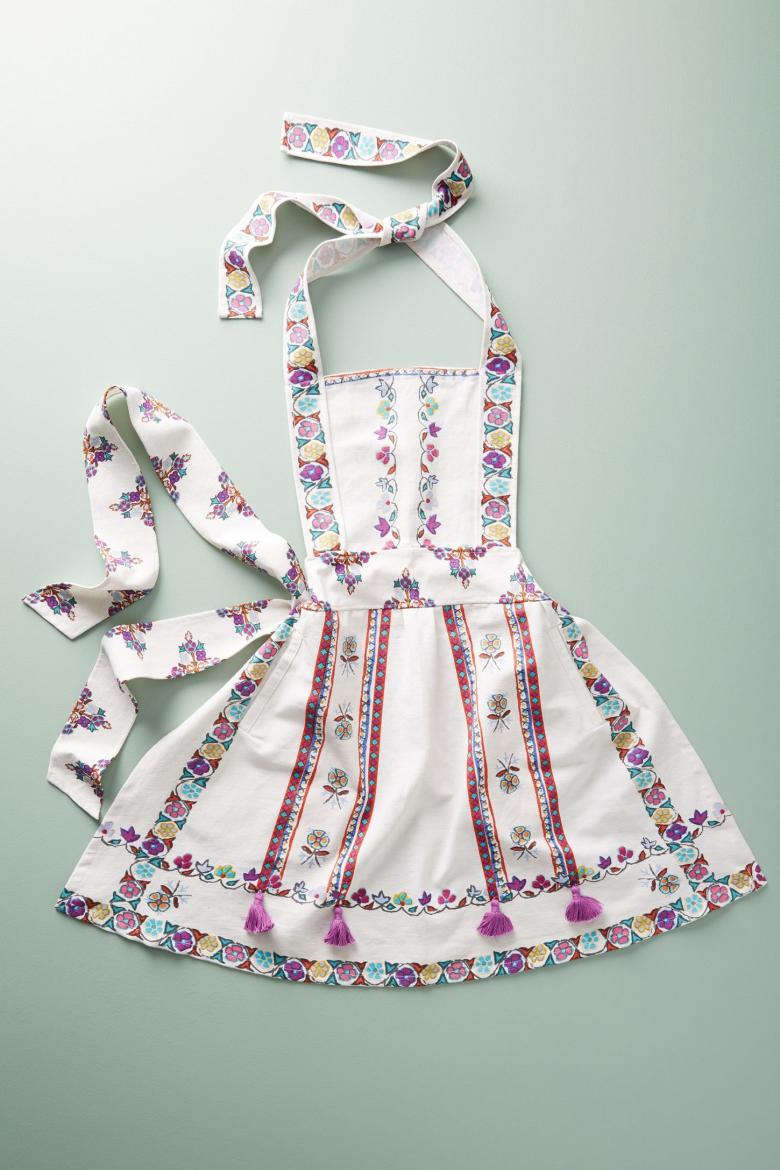
For work in the garden and exciting creative activities it is better to sew a full apron with a bib, and the style of its design depends entirely on the imagination of the master.

